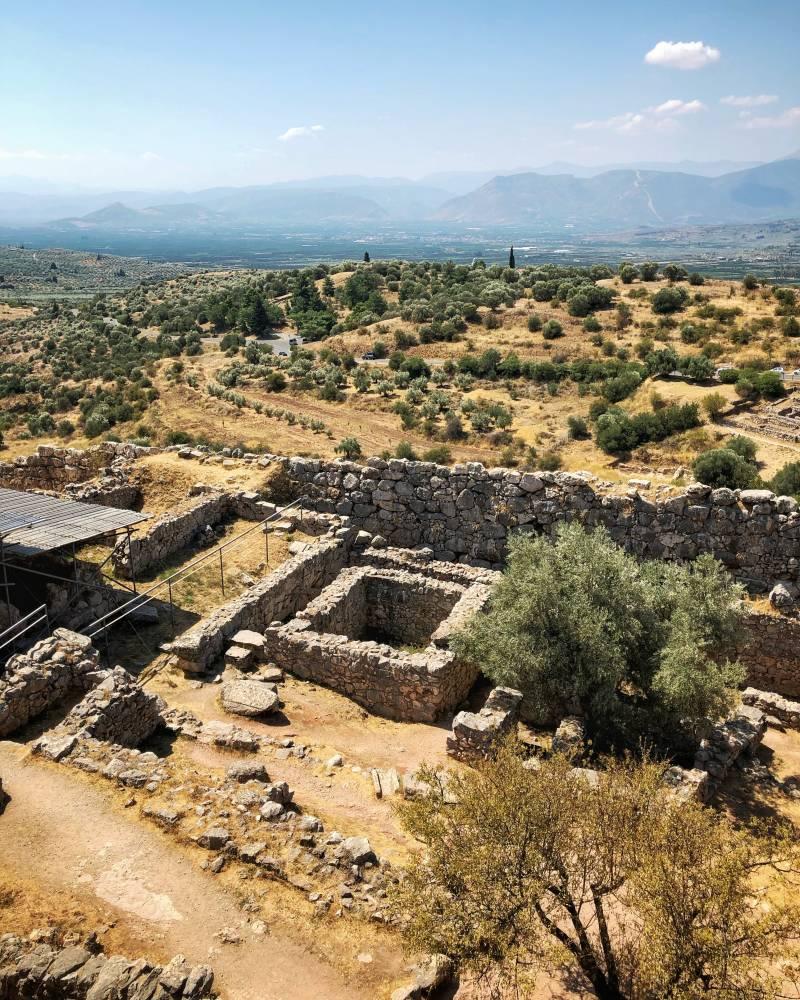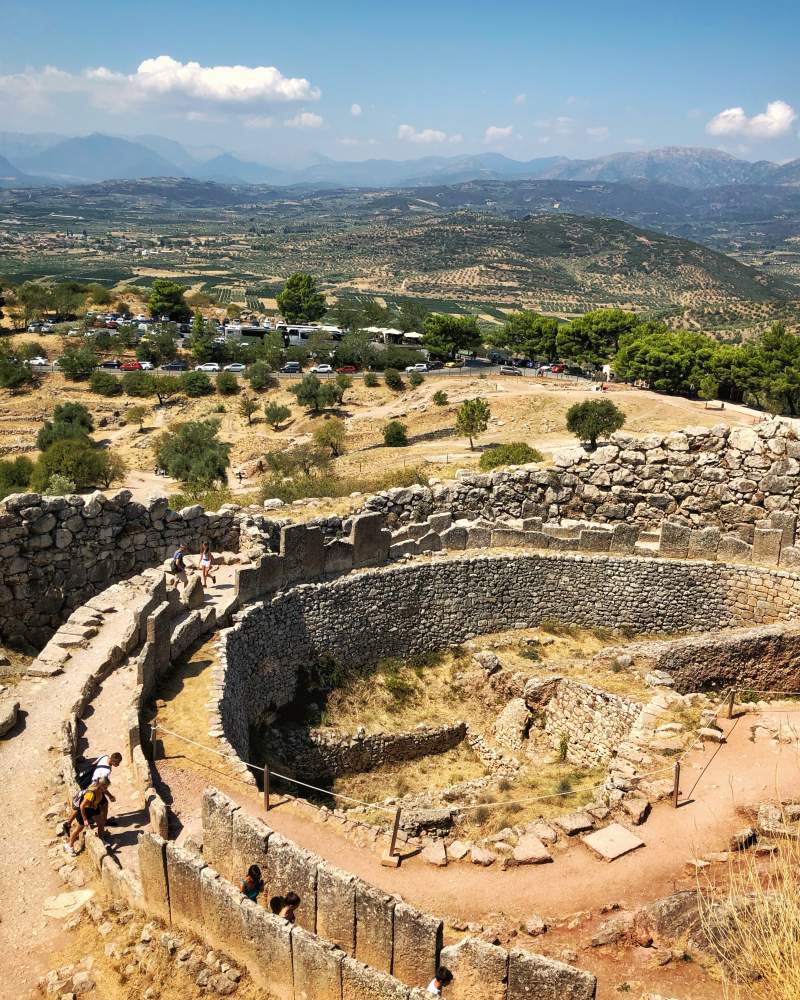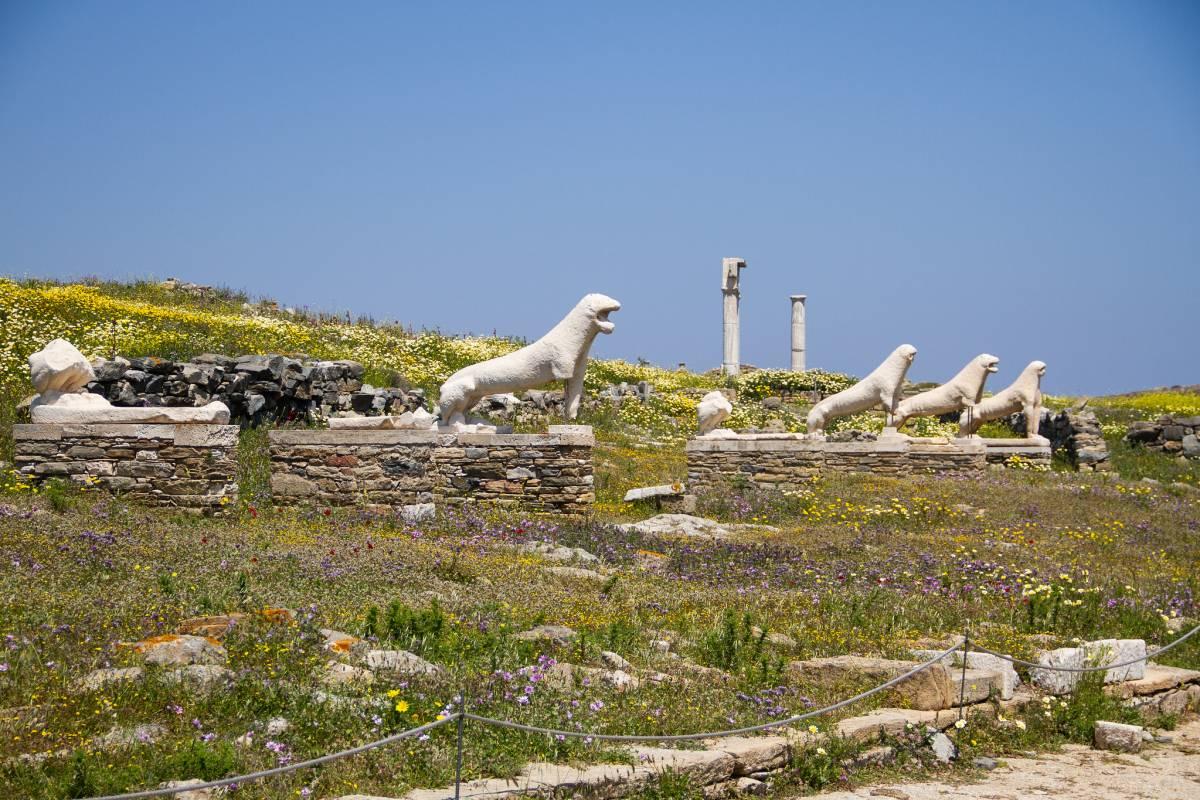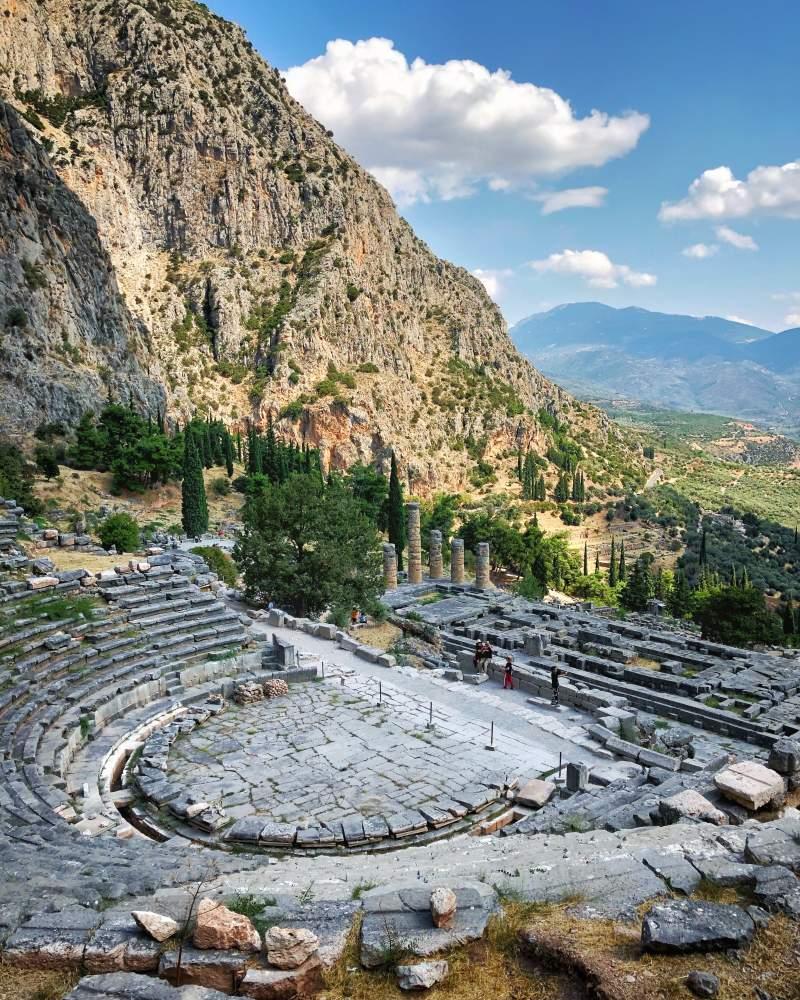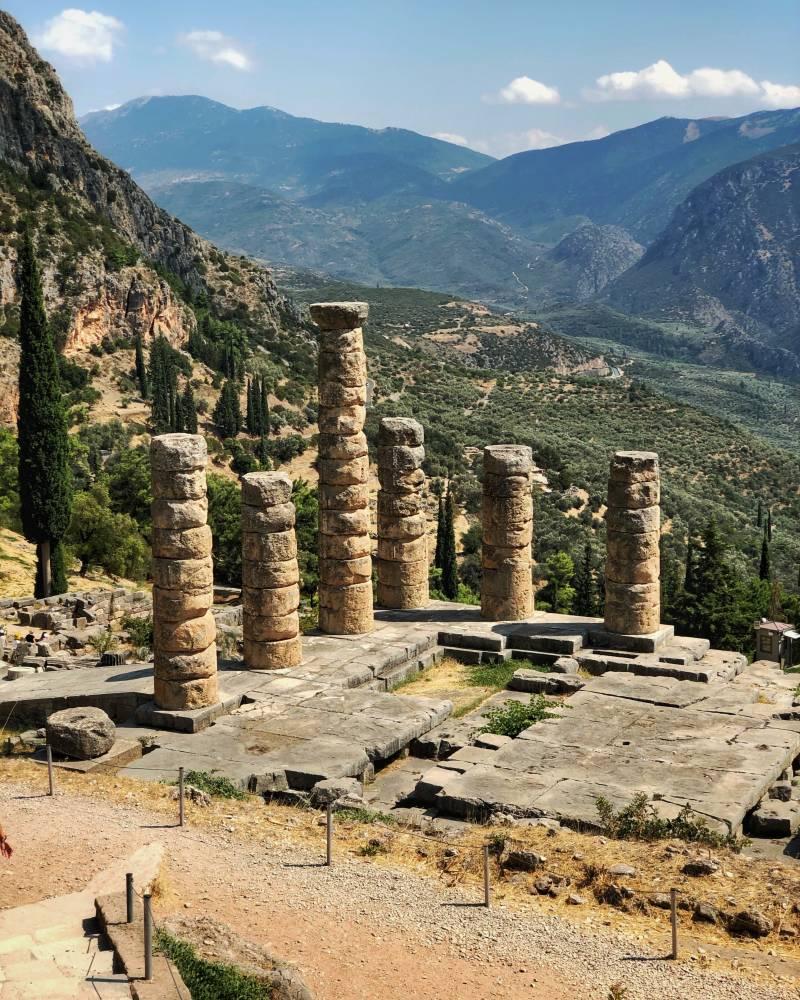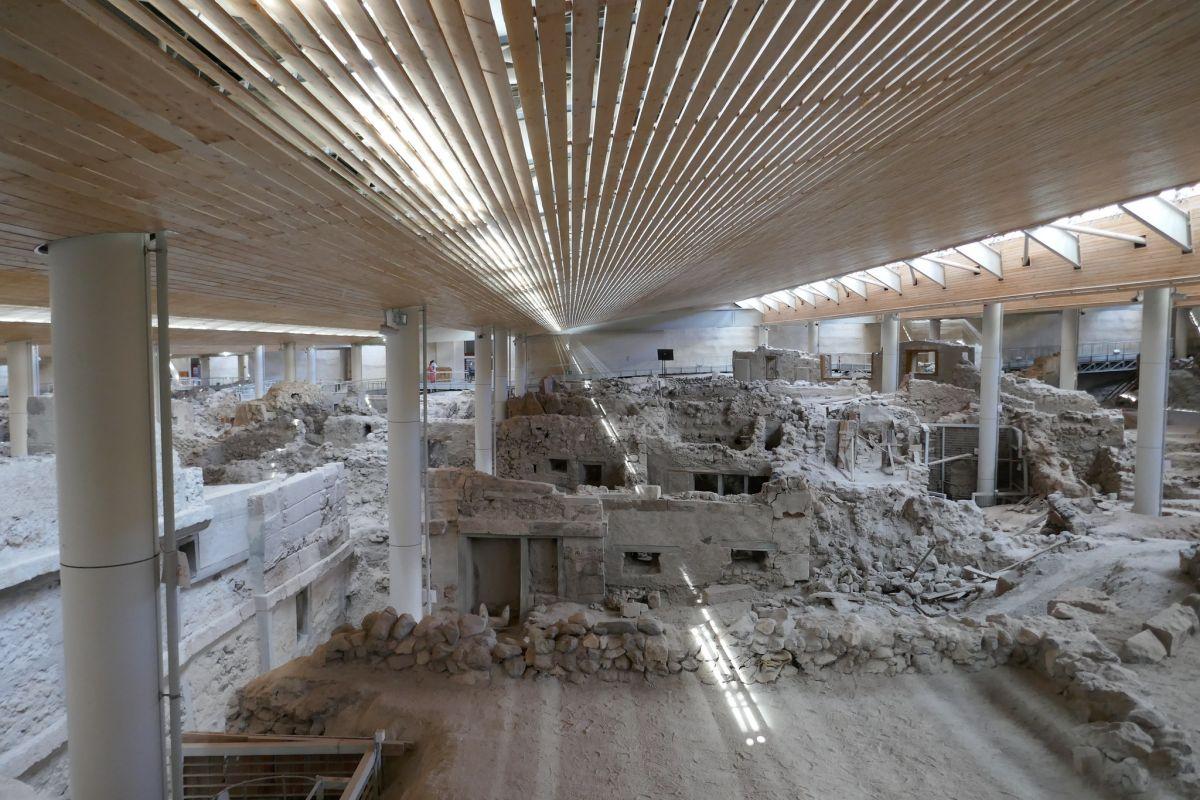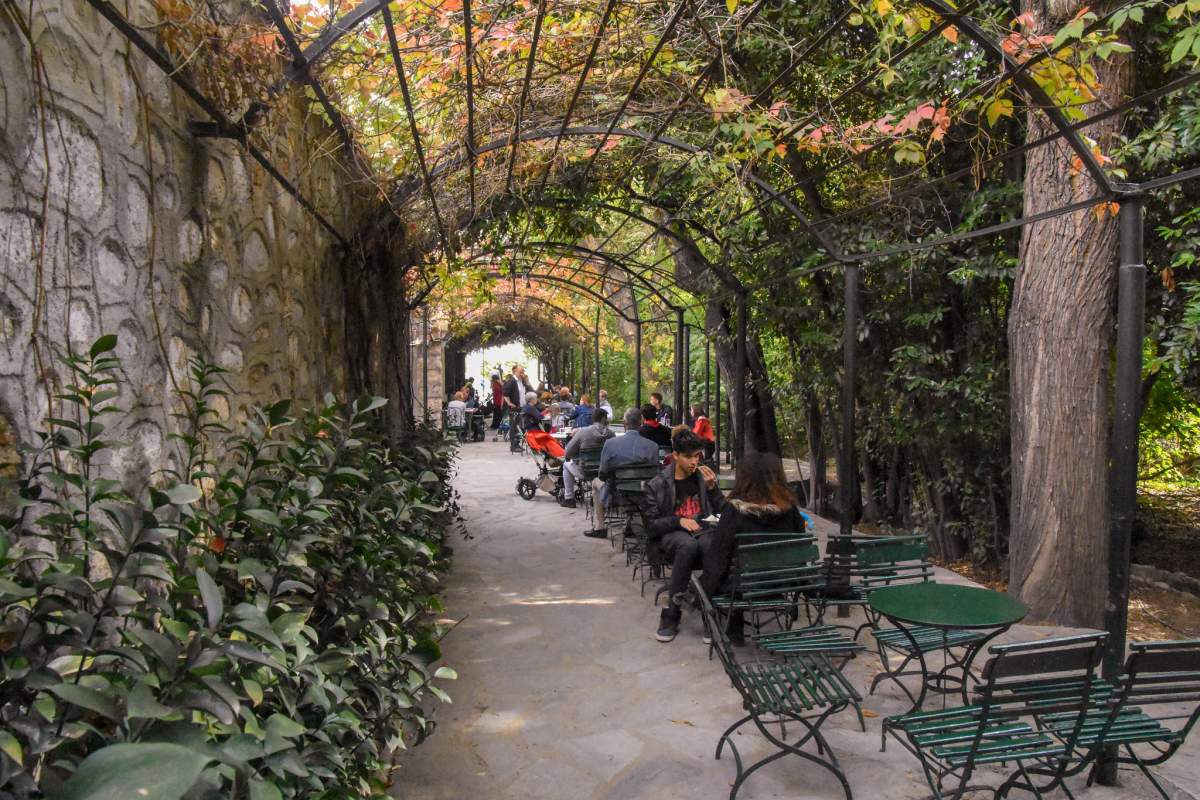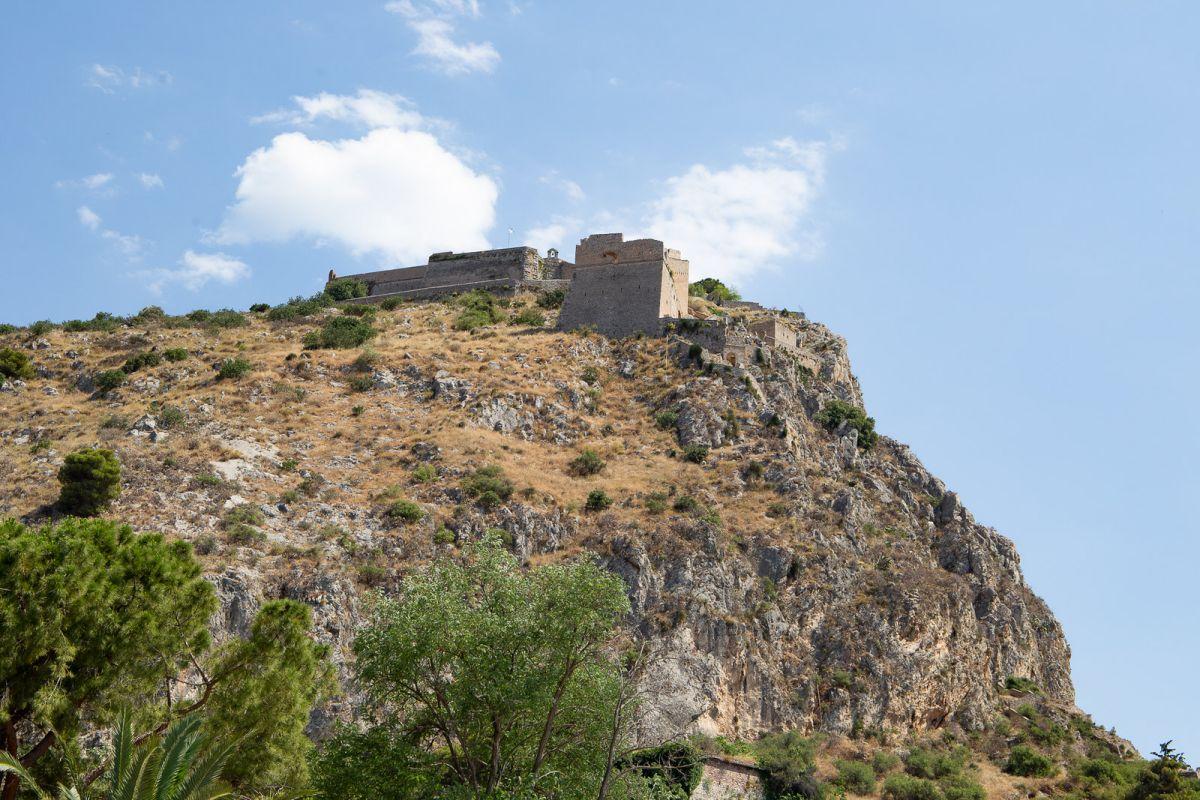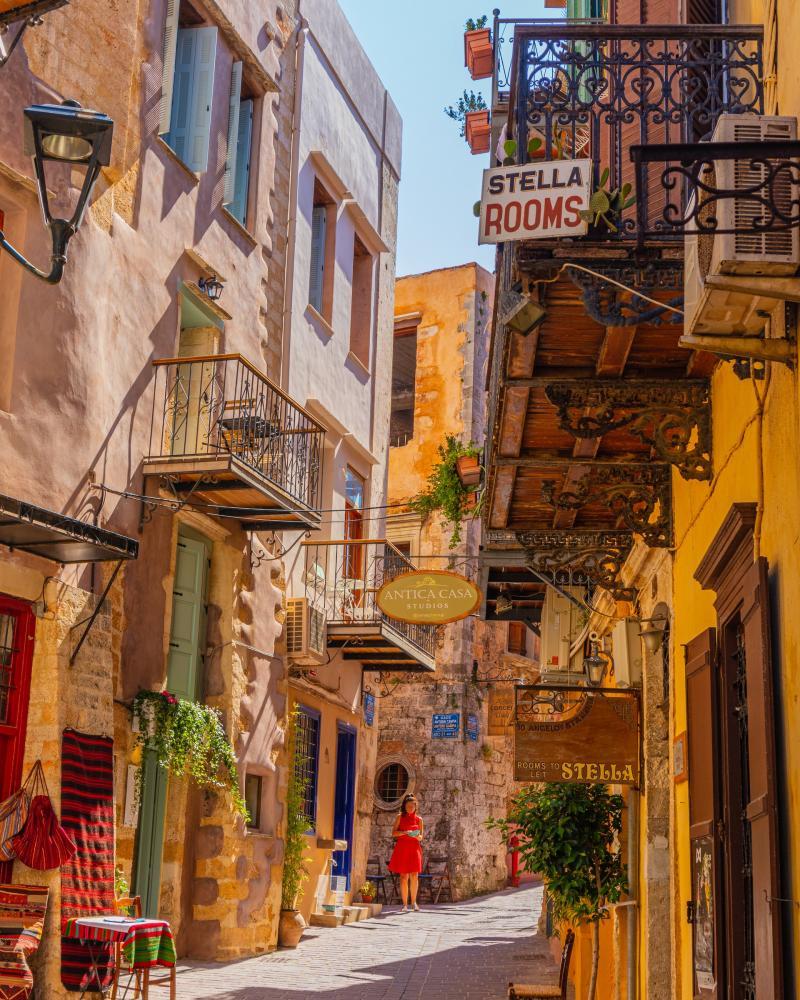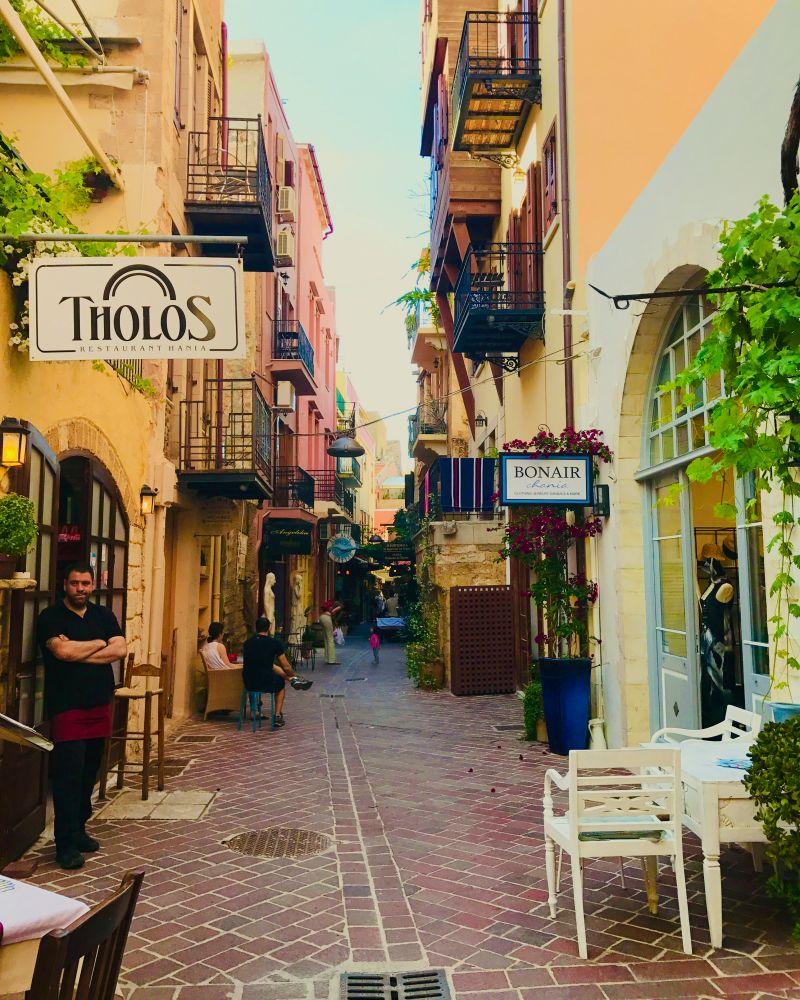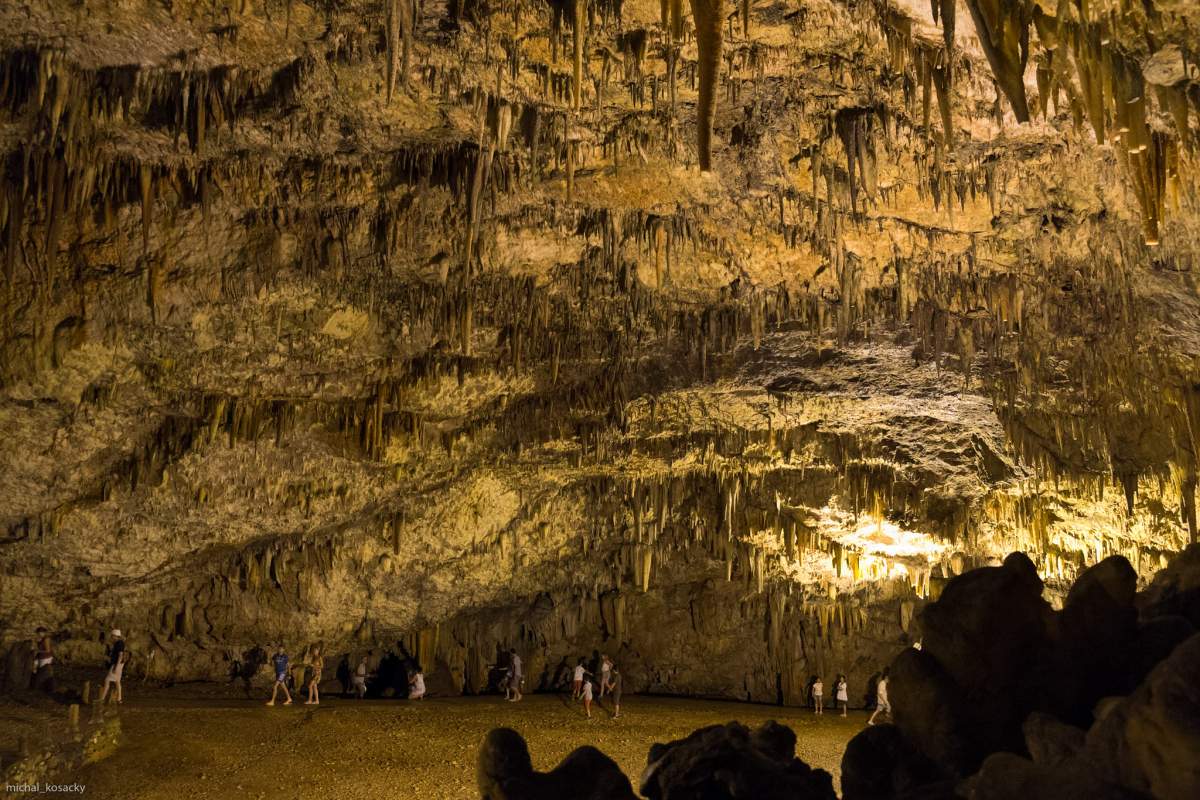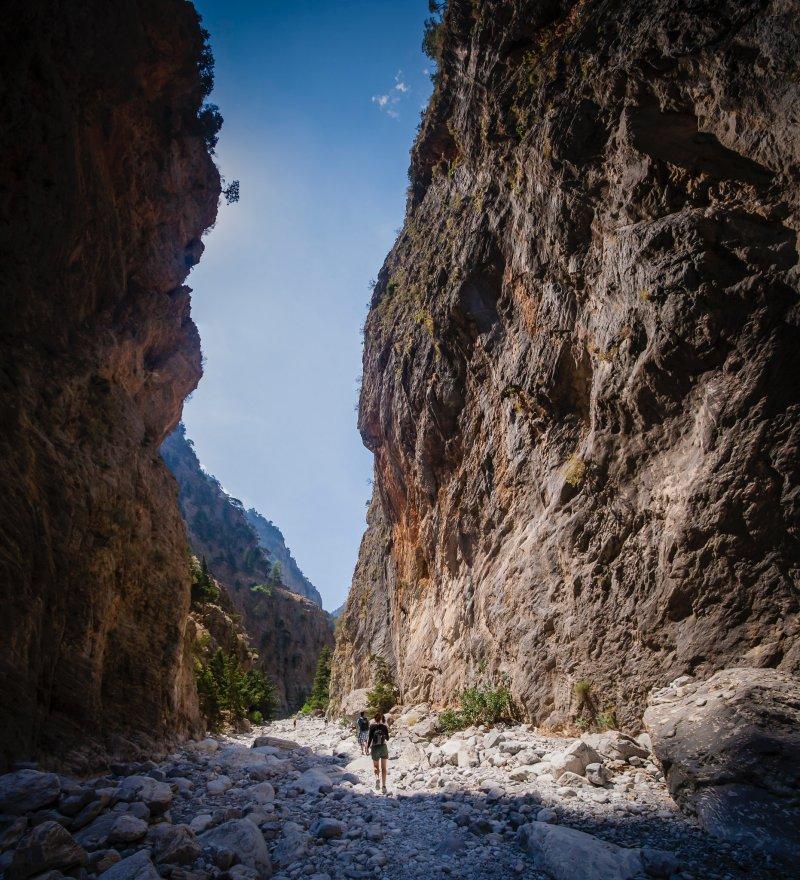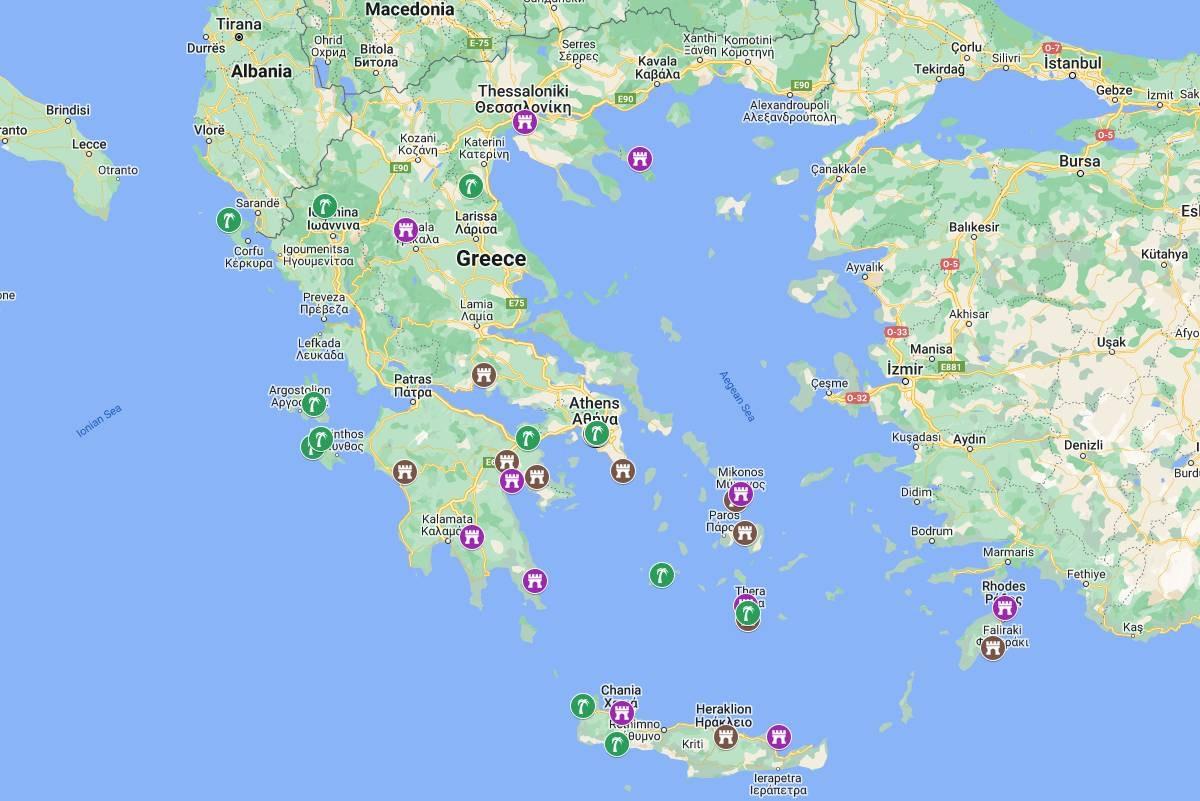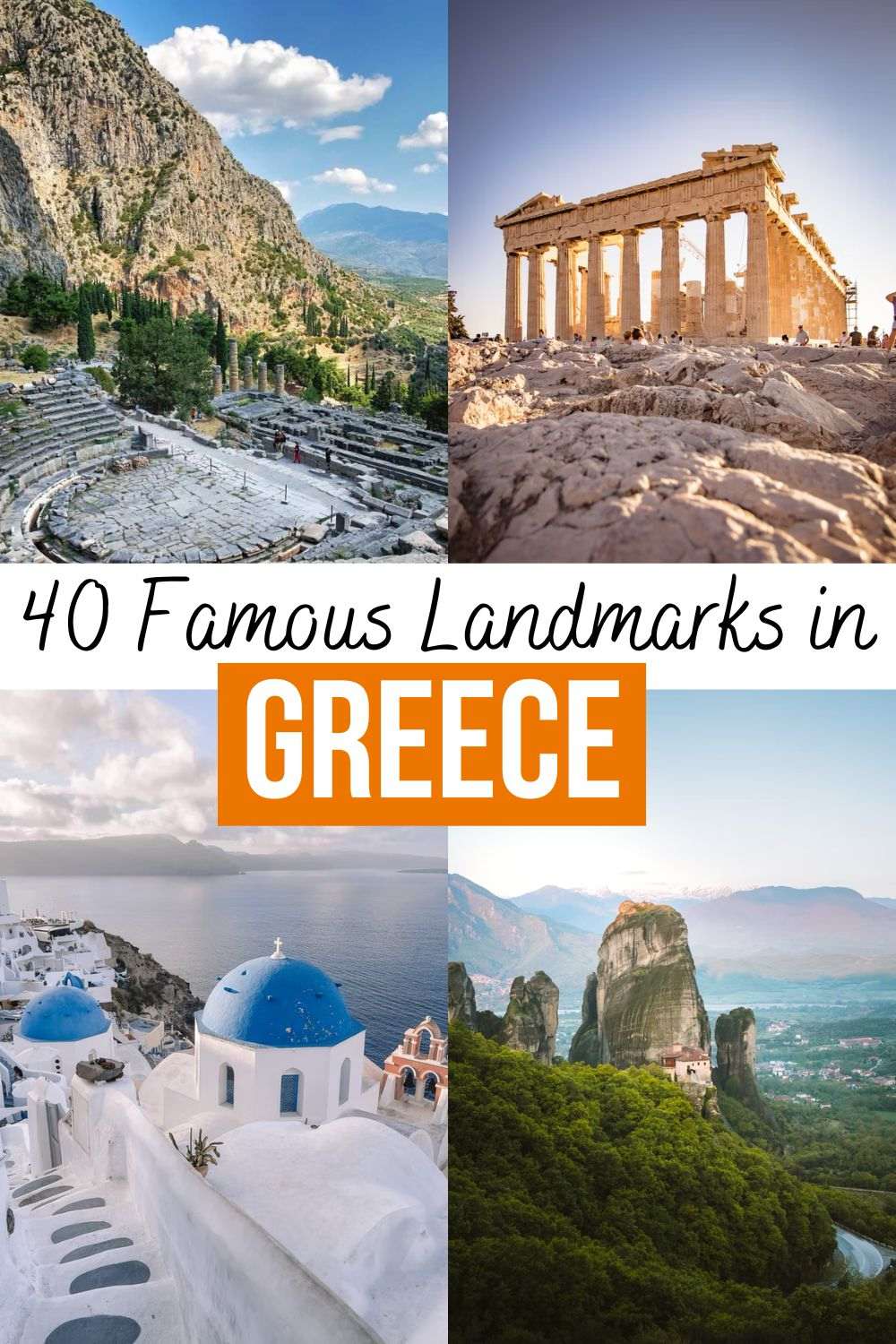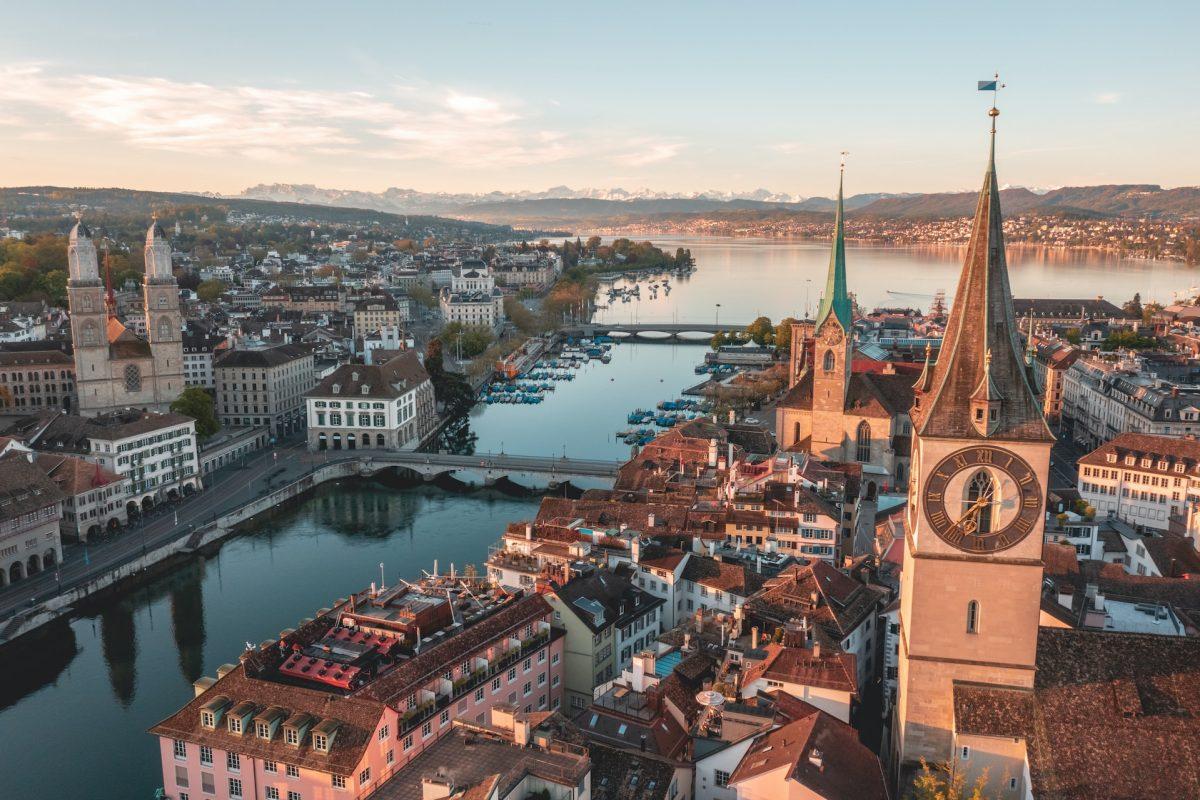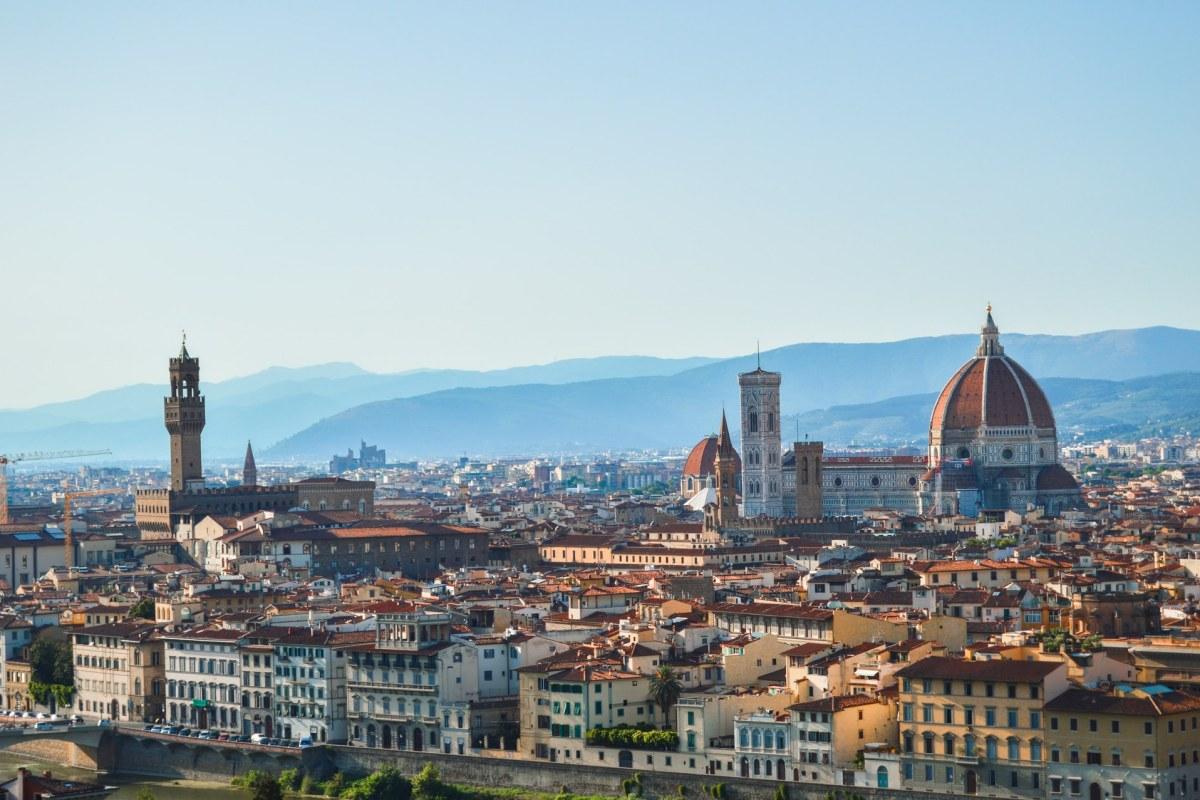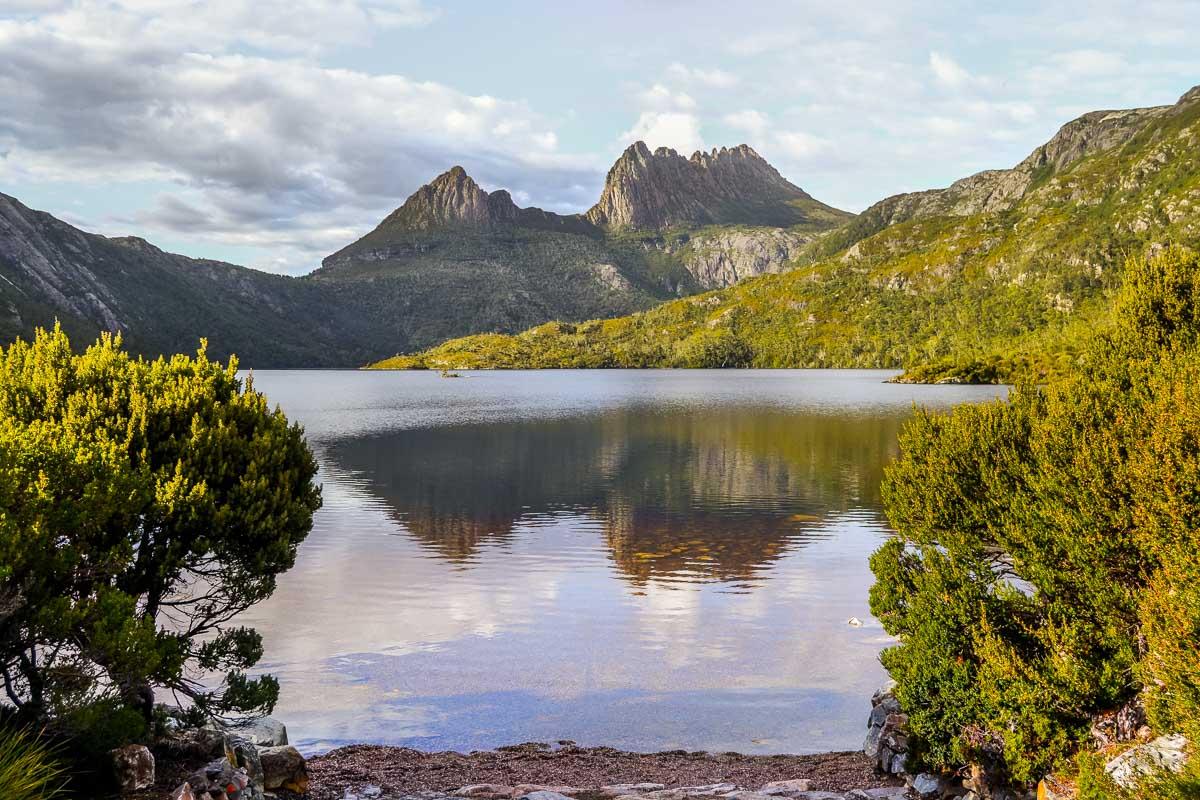40 Famous Landmarks in Greece [100% worth a visit]
It would be impossible to list all the places to visit in Greece as there are so many. It’s a spectacular land of beauty with an endless variety of historical and archaeological sites that make it one of the best destinations in the world.
But Greece isn’t only about ruins. With about 9,841 islands and islets, the country offers all kinds of landscapes including mountains, orange and olive groves, and white sandy beaches with turquoise waters. Its Mediterranean climate and delicious cuisine are also great assets to delight all types of travelers!
Discover in this post 40 of the most famous landmarks in Greece, man made and natural included! 🇬🇷
Full List of the 40 Famous Greek Landmarks
To make it easier, we’ve divided the famous Greece landmarks into 3 categories: the ancient monuments; other famous buildings in Greece that don’t date back to the ancient period; and the natural landmarks.
Find below the full list of the top 40 landmarks by category.
🏛 Ancient Greek landmarks:
- The Acropolis of Athens
- Parthenon
- Ancient Agora of Athens
- Temple of Olympian Zeus
- Odeon of Herodes Atticus
- Panathenaic Stadium
- Archaeological Site of Olympia
- Epidaurus Ancient Theatre
- Archaeological Site of Mycenae
- Temple of Poseidon
- Knossos Palace
- Delos
- Sanctuary of Delphi
- Akrotiri
- Apollo Temple – Portara
- Lindos Acropolis
🕍 Other famous monuments in Greece:
- Monasteries of Meteora
- Mystras
- Mykonos Windmills
- Domes of Santorini
- Palace of the Grand Master of the Knights of Rhodes
- National Garden
- Fortress of Palamidi
- Mount Athos Monasteries
- Chania Old Town
- Spinalonga
- Monemvasia
- White Tower of Thessaloniki
🏝 Natural landmarks in Greece:
- Mount Olympus
- Caldera of Santorini
- Canal d’Amour
- Shipwreck Beach of Zakynthos
- Blue Caves
- Drogarati Cave
- Mount Lycabettus
- Vikos Gorge
- Corinth Canal
- Balos Beach
- Samaria Gorge
- Sarakiniko Beach
So, here’s the list of the 40 famous landmarks Greece has to offer. To learn more and get details about each of them, keep reading below👇
Famous Landmarks of Ancient Greece
When speaking about the land of archaeology, many instantly think of Greece and its mythology. Not surprising as Greece is indeed the country with the most ancient sites in the world! They are spread everywhere in the country and its islands, and they are part of its incredible historical and cultural heritage.
Let’s discover 16 of the best ancient Greece monuments! 🔥
1. The Acropolis of Athens
The Acropolis of Athens is without a doubt the most famous landmark in Greece. Located on a hill in the capital city, its location is considered to be the center of the political, cultural, religious, and social life of ancient Athens.
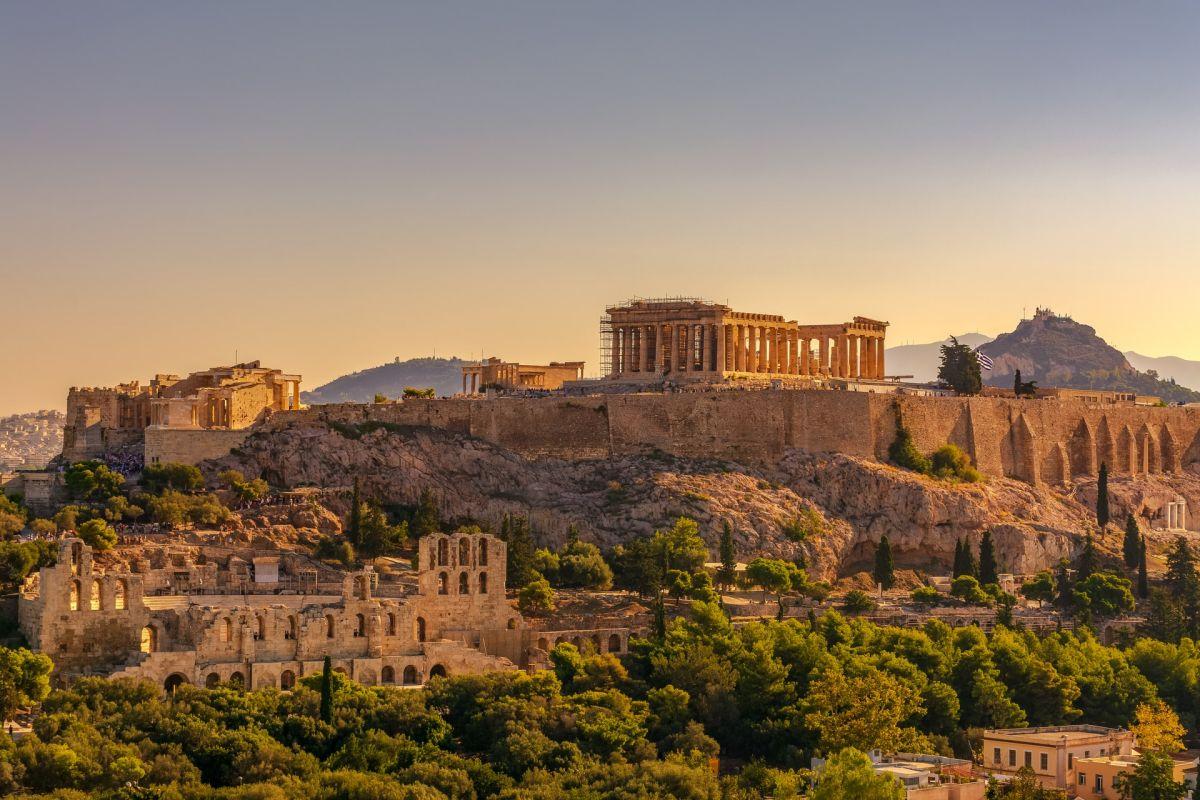
This great sanctuary dating from the 6th century BC houses several monuments such as the Parthenon, the ancient theater of Dionysus, and the Propylaea, the large columns that once marked the entrance to the city.
Listed as a UNESCO World Heritage Site since 1987, the Acropolis is one of the sites that attract the most tourists in the world. A massive restoration work that started in the 19th century is currently still in progress.
2. Parthenon
Located on the Acropolis of Athens, the Parthenon is dedicated to the goddess Athena Parthenos. She embodies war and wisdom and holds the role of protector of the city.
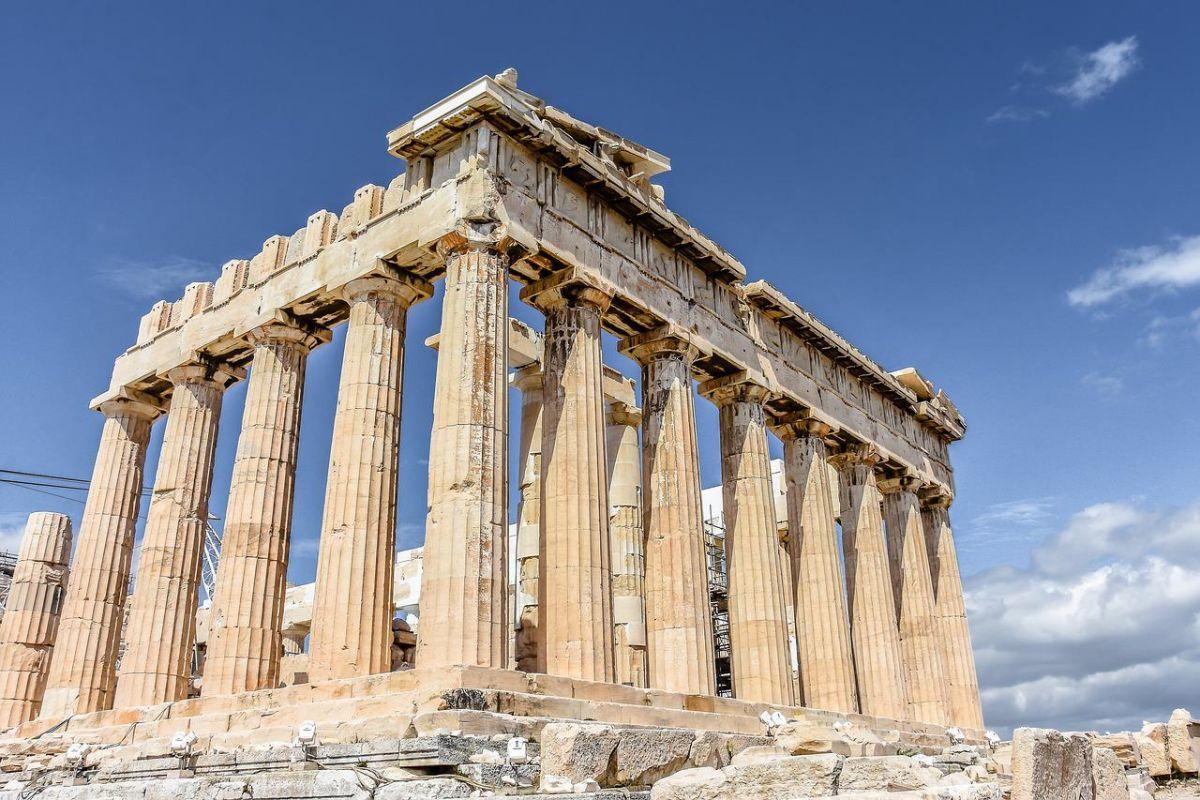
The Parthenon as we know it today was built between 447 and 438 BC by Pericles. But this monument is in fact the 3rd version of the Parthenon of Athens. Indeed, the Parthenon I was built around 570 BC. The second, the pre-Parthenon, was erected in 499 BC at the same place to celebrate the battle of Marathon, but it was destroyed by the Persians in 480 BC.
Over the centuries, the Parthenon became a church first dedicated to Saint Sophia, then to the Virgin Mary. It even became a mosque under Turkish rule.
Throughout history, the Parthenon has inspired countless architects and some of the world’s most famous monuments pay tribute to it such as the Supreme Court of the United States or the British Museum.
3. Ancient Agora of Athens
The Agora is a large public square at the foot of the Acropolis in Athens stretching between the Areopagus hill to the south and the Kolonos Agoraios hill to the west. It’s the place where democracy was born and the center of the political, administrative, philosophical, cultural, and commercial life of Athens.
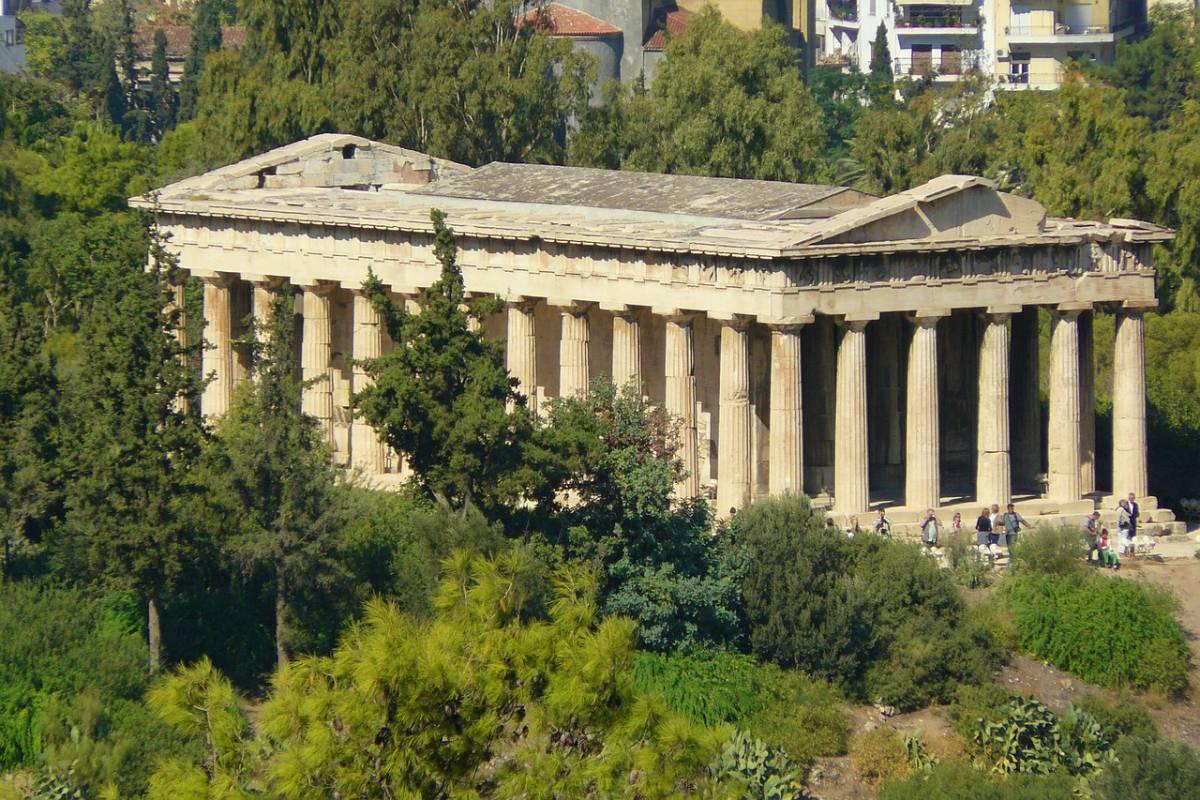
The first traces of life in the Agora date back to the Neolithic period (3000 BC). However, it’s from the 6th century BC and for 800 years that the Athenians walked in the Agora to shop and talk about politics or philosophy. It’s also in this place that social and cultural activities took place, as well as religious festivals, theatrical events, and games.
Nowadays, the place is dedicated to archaeological research. Many tombs and houses have been found there. The Stoa of Attalos was also discovered and renovated there.
4. Temple of Olympian Zeus
The temple of Olympian Zeus is located a few hundred meters from downtown Athens, south of the Acropolis. Like the Parthenon, this Greek monument is entirely built in white marble and is remarkable for its 15 Corinthian columns of 17 meters (initially, it had 104 columns!).
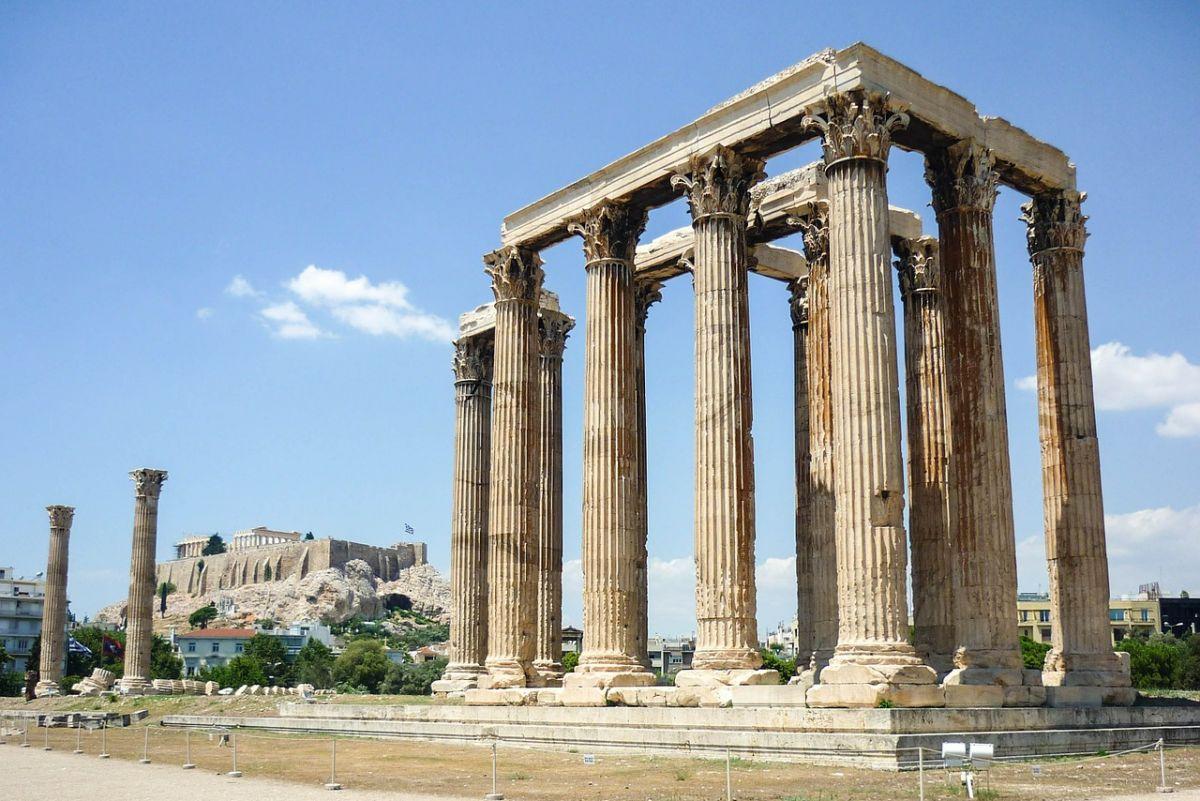
Although its foundations date back to 515 BC, it wasn’t until 130 AD and the emperor Hadrian that this temple in honor of Zeus was built. But the frequent earthquakes during the Byzantine period and the successive looting and reuse of building materials have left the work in a state close to what it is today.
Despite the damage caused by time, it’s a major landmark of the classical period in Athens. Its eventful history and gigantic size fascinate both Ancient scholars and travelers.
5. Odeon of Herodes Atticus
At the foot of the Acropolis, there’s an impressive monument, left abandoned for a long time. The Odeon of Herodes Atticus hosted theatrical and musical performances in ancient times.
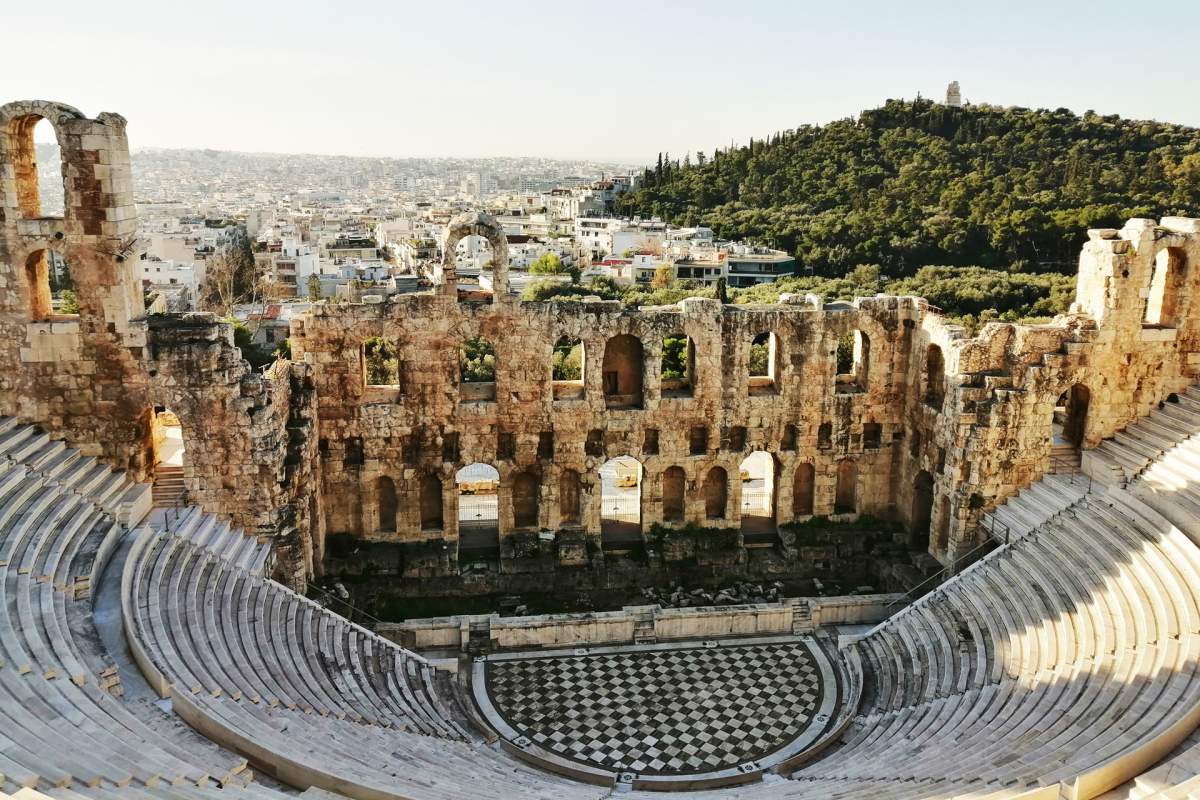
In 161, Atticus, a philanthropic magnate and Roman senator, decided to build an odeon in honor of his wife who died in 160. At the time it was built, the theater measured 87 meters in diameter and could accommodate up to 5,000 spectators. Its capacity was rather low for the ancient city which already had 290,000 people. Despite this, the Odeon is one of the most important of its kind in all of Greece.
Unfortunately, after the death of Atticus, the monument fell into ruin: nobody cared about it anymore until 1950. Restauration work started only in the 1950s, bringing it back to its former glory. Since then, the Odeon of Herodes Atticus has been able to host events such as the election of Miss Universe in 1973, and many shows every year between May and September. It’s undoubtedly one of the best ancient Greece landmarks to see.
6. Panathenaic Stadium
Located in Athens near the National Garden and the Zappeion, the Panathenaic Stadium is the only stadium built entirely of marble and the only one in a U shape.
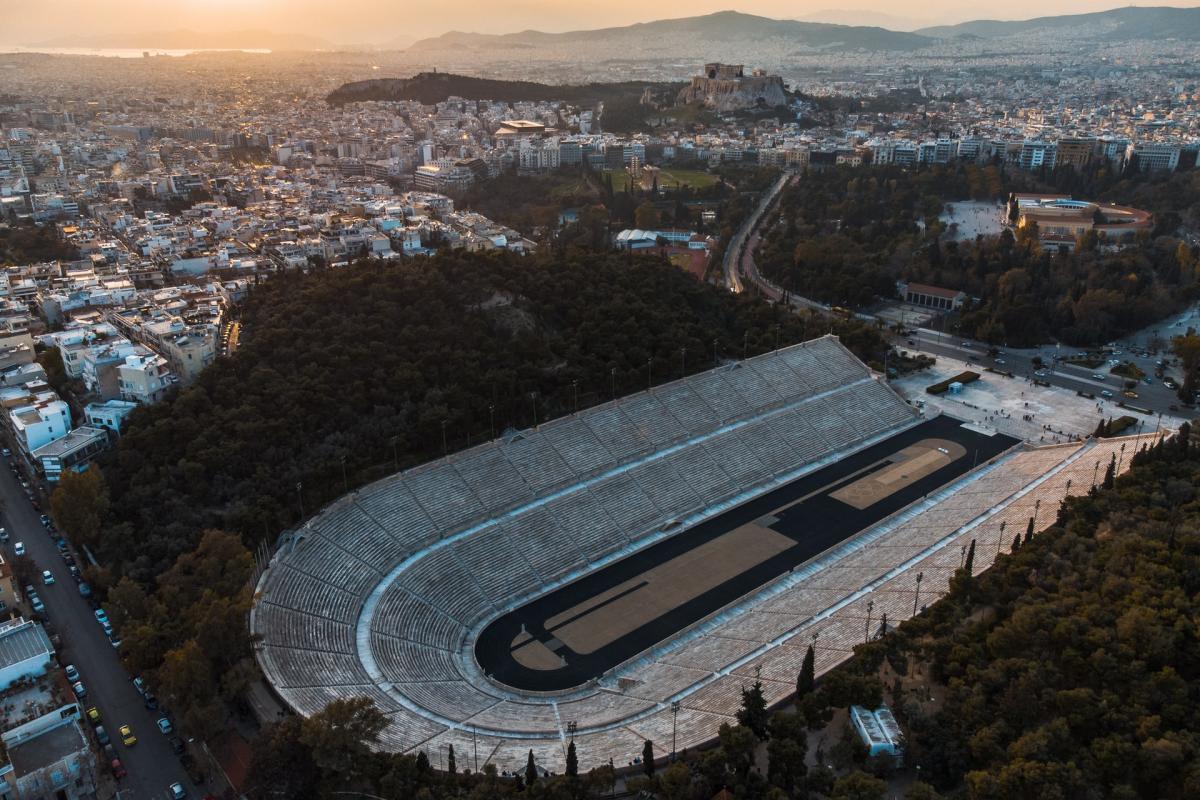
This ancient stadium was built in 330 BC to host the great Panathenaeus, the ancestor of our modern Olympics. It was rebuilt and covered with marble in 140 AD by Herod Atticus and has a capacity of 70,000 spectators, ideal to see the gladiator fights. Forgotten after the fall of Rome, it was not until the 19th century that it was renovated again to organize the first modern Olympic Games.
Its track, now made of clay, is very long and the turns are tight. Its dimensions, typical of ancient stadiums, no longer meet the standards imposed for athletics stadiums. But it remains a must-see for a visit to Athens!
7. Archaeological Site of Olympia
In the northwest of the Peloponnese, the site of Olympia known as the cradle of the Olympic Games is absolutely fascinating for mythology lovers and is one of the most sacred sites in Greece.
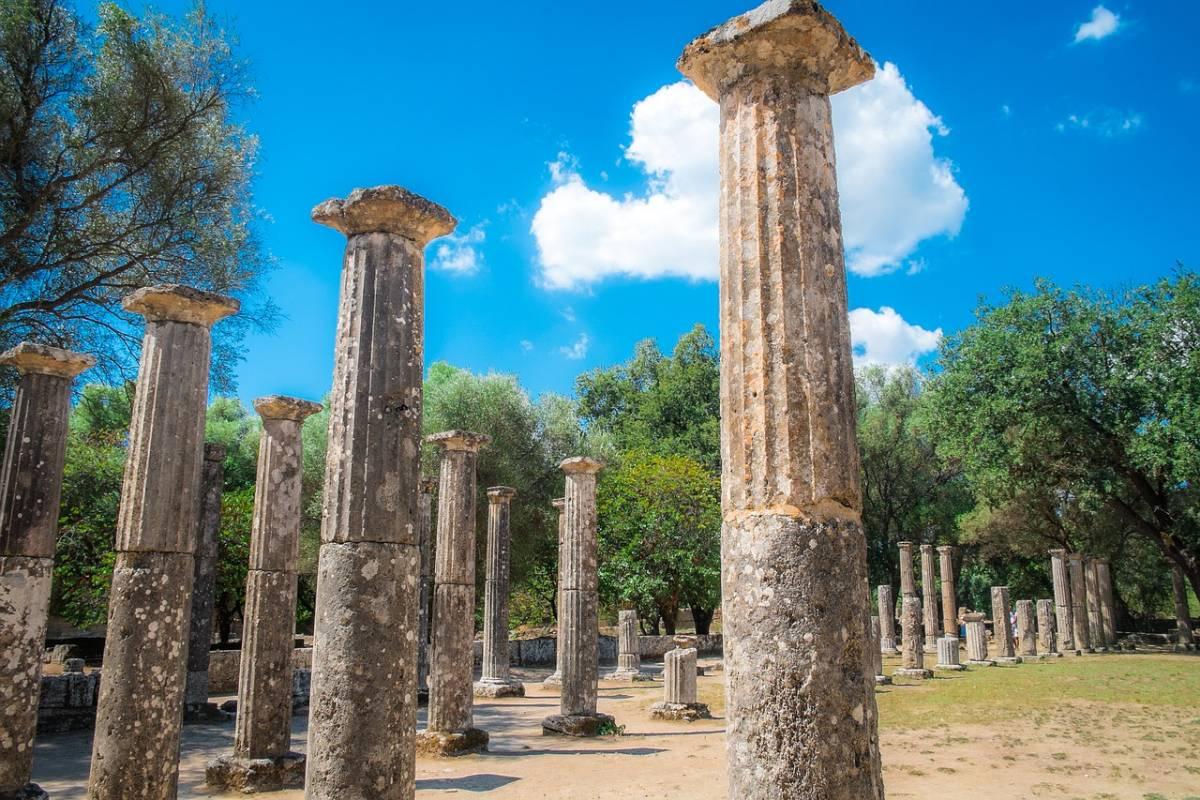
Classified by UNESCO since 1989, the site is divided into 3 main areas. First is the Sanctuary which includes the Temple of Hera and the colossal Temple of Zeus housing the statue of Phidias. Then the Quadrilateral, a sort of Olympic village including places of banquets in favor of the winners, housing, and thermal baths. And finally, sports facilities that hosted the Olympic Games every 4 years from 776 BC to 393 AD.
There are other gems around, such as the Olympic Botanical Garden or the Nemouta waterfalls, that’s why it’s better to plan 2 or 3 days to visit this amazing Greek landmark.
8. Epidaurus Ancient Theatre
Located in the northeast of the Peloponnese peninsula, Epidaurus is a small city known worldwide for its extraordinary ancient theater, one of the most famous Greek monuments.
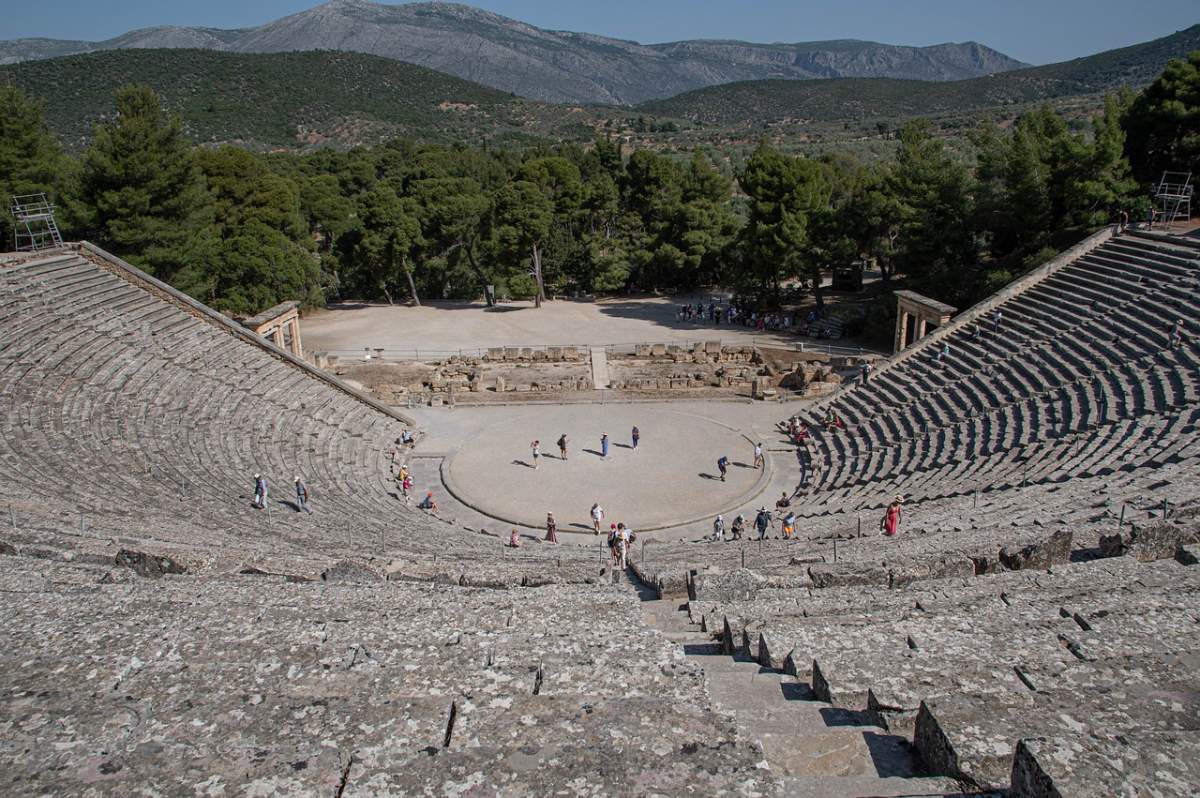
In the classical era, the ancient city of Epidaurus enjoyed great prestige and fame mainly because of its sanctuary dedicated to Asclepius, the healing god. This place was home to very famous doctors and dream healing was practiced there. Today, the sanctuary remains almost intact.
The ancient theater of Epidaurus built in the 3rd or 4th century BC is very well preserved and is certainly one of the most surprising places to visit in the whole country. Performances are still held in this well-preserved space with wonderful acoustics.
9. Archaeological Site of Mycenae
Listed as a Unesco heritage site, Mycenae is one of the ancient cities to visit in the Peloponnese, one of the best historical sites in Greece, and a great day trip to do from Athens.
The ancient city of Mycenae is at the heart of Greek mythology, but also of Europe’s civilizational history. According to the legend, Mycenae belonged to the dynasty of the Atreides, from which King Agamemnon, one of the protagonists of the Trojan War, came.
Visiting this site surrounded by Cyclopean wall fortifications will immerse you in the history of the rich and powerful Mycenaean civilization, active from 2000 to 1200 BC. The first great building of interest in Mycenae is of course the Acropolis and its great ramparts, from where you can enjoy a sensational view of the surroundings. The Lions’ Gate, the symbol of protection of the city, stands proudly in the middle of the walls. On the way out of the site, you can reach the Treasure of Atreus, a royal tomb built in the shape of a circular dome.
10. Temple of Poseidon
Visiting the temple of Poseidon at Cape Sounion is the perfect excursion if you want to escape Athens for a day. Located about 1 hour southeast of Athens, the temple of Poseidon whose white marble columns serve as a landmark for sailors stands proudly atop a rocky outcrop.
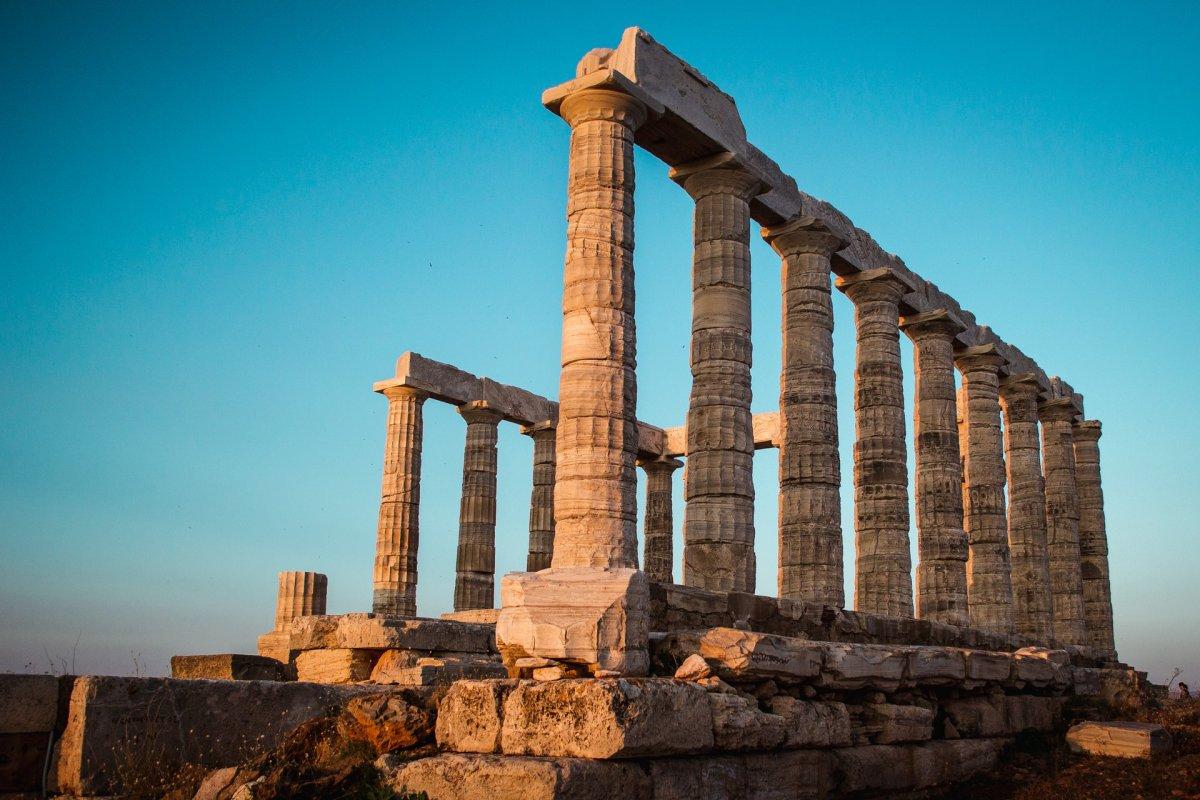
The temple was built in 444 BC, at the same time as the Parthenon. It is dedicated to Poseidon, God of the Sea and protector of sailors. The temple is impressive even if there are only 15 marble columns left out of the original 34. Its exceptional location, overlooking the sea, is worth the visit alone and offers breathtaking panoramic views.
In mythology, this place is known for its legend which tells that it is here that King Aegeus would have thrown himself from the top of the cliff believing his son Theseus dead following his duel with the Minotaur.
11. Delos
Located in the heart of the Cyclades opposite the island of Mykonos, the island of Delos is a major archaeological site in Greece classified as a World Heritage Site by UNESCO. It is, with Delphi, the main sanctuary of ancient Greece.
This tiny island of 3.5 km² was one of the most important cities of Antiquity and an economic and religious center. Remains testify to the first traces of occupation in Delos, which date back to the middle of the third millennium BC.
The place is absolutely unique: an open-air “museum” between sky and sea. The island is uninhabited, with no living soul, only extraordinary remains. The most famous monument of this sacred island is the Terrace of the Lions. There are also frescoes and mosaics, as well as remains of temples and theaters.
12. Sanctuary of Delphi
Nestled beneath the slopes of Mount Parnassus, the ancient ruins and green hills of Delphi were considered the center of the world by the Greeks.
The city of Delphi is home to the sanctuary of Apollo, the Olympian god of light, knowledge, and harmony, a temple of Hellenic architecture that was discovered only in 1892. According to mythology, it’s here that 2 eagles released by Zeus met, one towards the east, the other towards the west. But this site is best known for the legend of the Oracle of Delphi: a famous priestess that the greatest kings came to consult to know their future.
If you spend a few days in the Greek capital, don’t miss to visit the archaeological site, the village of Delphi, and the museum. Easily accessible from Athens, this place offers you an incredible adventure in the footsteps of the Greek gods.
13. Knossos Palace
Located on Crete island not far from the town of Heraklion, Knossos is an archaeological site classified as world heritage by UNESCO representing one of the oldest cities in Greece. This Bronze Age relic was once home to the powerful Minoan civilization that dominated the area over 5000 years ago.
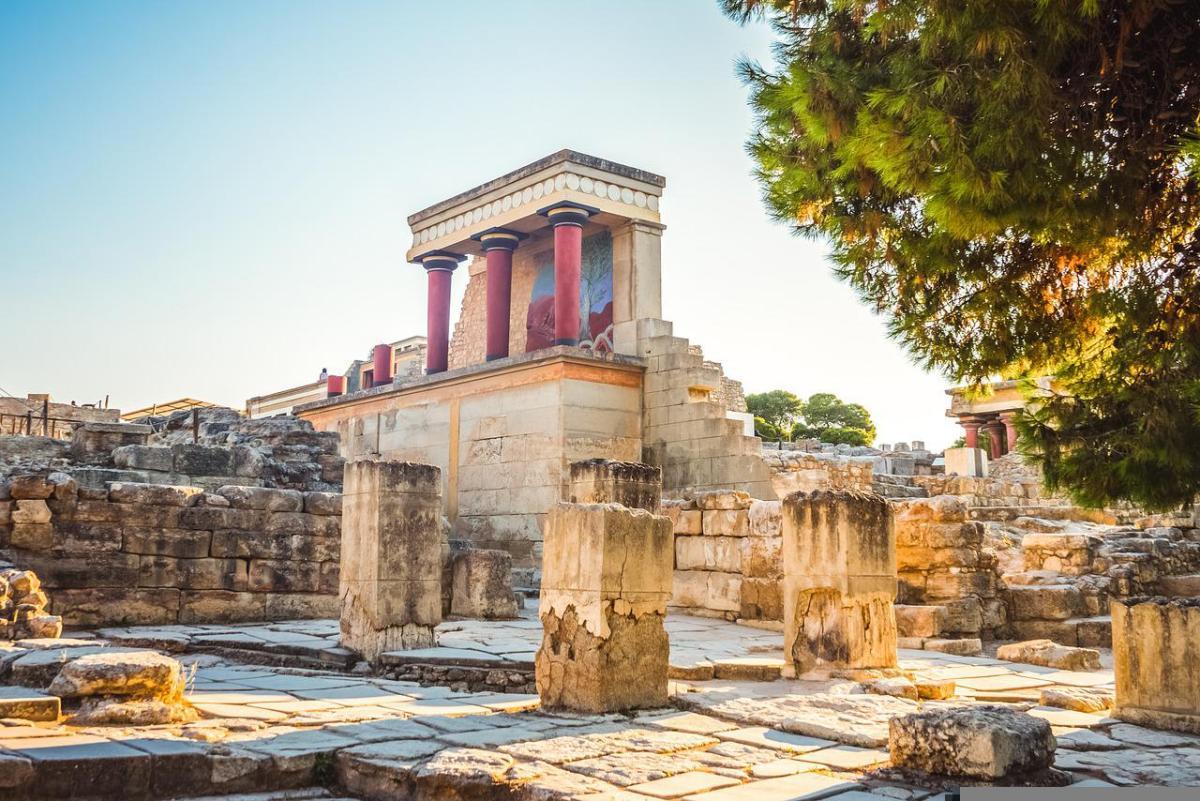
The ruins of Knossos are the best-preserved Bronze Age remains in the entire country and are an incredible historical place in Greece.
Today, Knossos is best known for its palace, of which important remains are still visible. In addition to the beautiful mosaics and pottery, there is also the Hall of the Kings, the place where the legend of the Minotaur and the Labyrinth was played out.
14. Akrotiri
Located in the south of the main island of Santorini, Akrotiri is an ancient village best known for its archaeological excavations. It is somewhat like the Pompeii of Greece.
Akrotiri was an ancient city that was devastated by a terrible volcanic eruption that occurred around 1500 BC. In 1967, a team of archaeologists conducted a major excavation that brought to light the remains of a fabulous city of the Minoan civilization dating from 1600 BC. Large quantities of artifacts, including frescoes, paintings, ancient utensils, clay, and metal objects were discovered at the site of Akrotiri. Archaeologists are still working there and most of the area is still to be explored.
Having survived the centuries, the village itself is pleasant to visit. It has a small castle called “Ponta”, a beautiful lighthouse, and the Red Beach surrounded by red cliffs of volcanic sand.
15. Apollo Temple – Portara
Located on the island of Naxos, the largest and highest of the Cycladic islands, Portara is a massive marble gateway standing just a stone’s throw from the harbor on the islet of Palatia which was once a hill.
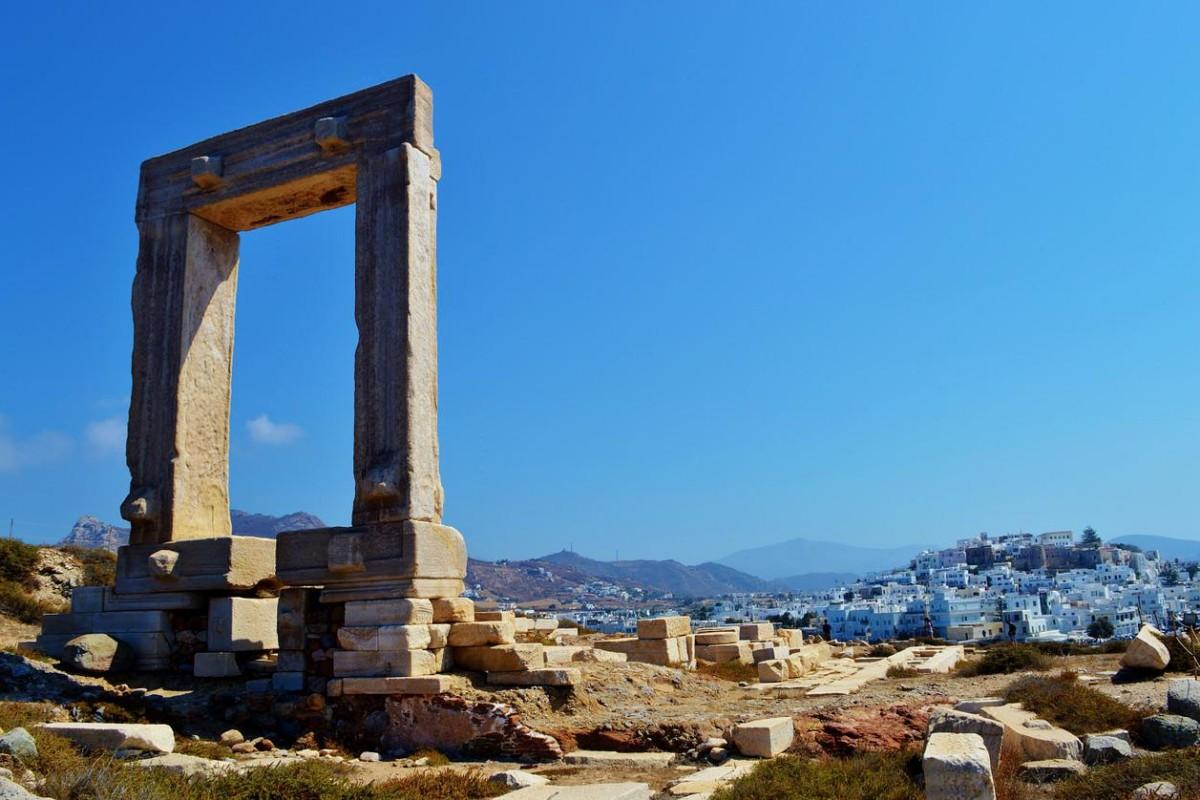
As with many ancient Greek monuments, the origins of the gate combine a bit of myth, history, and folklore. The gate was part of an unfinished temple commissioned by the tyrant Lygdamis in the 6th century. As for the legend, it tells that it’s at this very spot that Ariadne, the daughter of King Minos, would have been left by her lover Theseus, just after he had slaughtered the Minotaur.
For lovers of old stones and ancient Greece, the gate of Apollo is certainly not to be missed when staying in Naxos, especially at sunset: the view of the sea is simply outstanding!
16. Lindos Acropolis
Lindos is a village located on the east coast of the beautiful island of Rhodes, an unmissable visit especially because of its beautiful acropolis. Lindos would have been founded in the 10th century BC by the Dorians. No need to tell you that its 3,000-year-old basement has seen a lot of things!
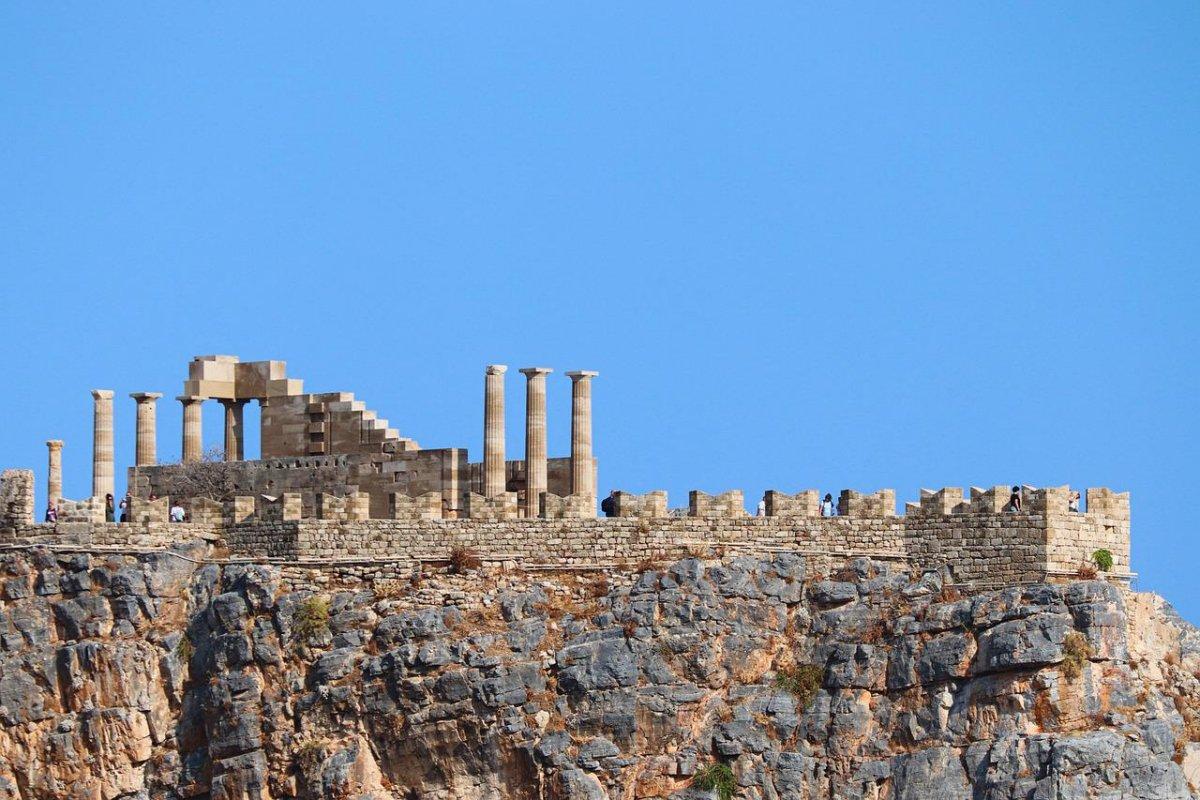
Perched between sky and sea, the Acropolis of Lindos has a magnificent location on the seafront and offers a splendid view of the bay of St. Paul on one side, and the white city on the other. At its highest point is the temple of Athena, one of the few ancient temples to have preserved its lateral colonnade and its inner walls.
The Acropolis can be reached on foot or by donkey. However, be careful because the site is in full sun and the climb is slippery. Sneakers or walking shoes are mandatory!
Other Famous Monuments in Greece
As mentioned above, Greece is world-famous for its ancient sites. But an archaeological site in Greece isn’t necessarily from the ancient classical period. Indeed, Greece also has important Byzantine and medieval remains that shouldn’t be disregarded as their heritage is unique.
Here are 12 of the best monuments Greece has to offer that aren’t from the Antiquity. 🚀
17. Monasteries of Meteora
Located near Kalambaka in the north of the country, Meteora is definitely one of the most impressive points of interest in Greece.
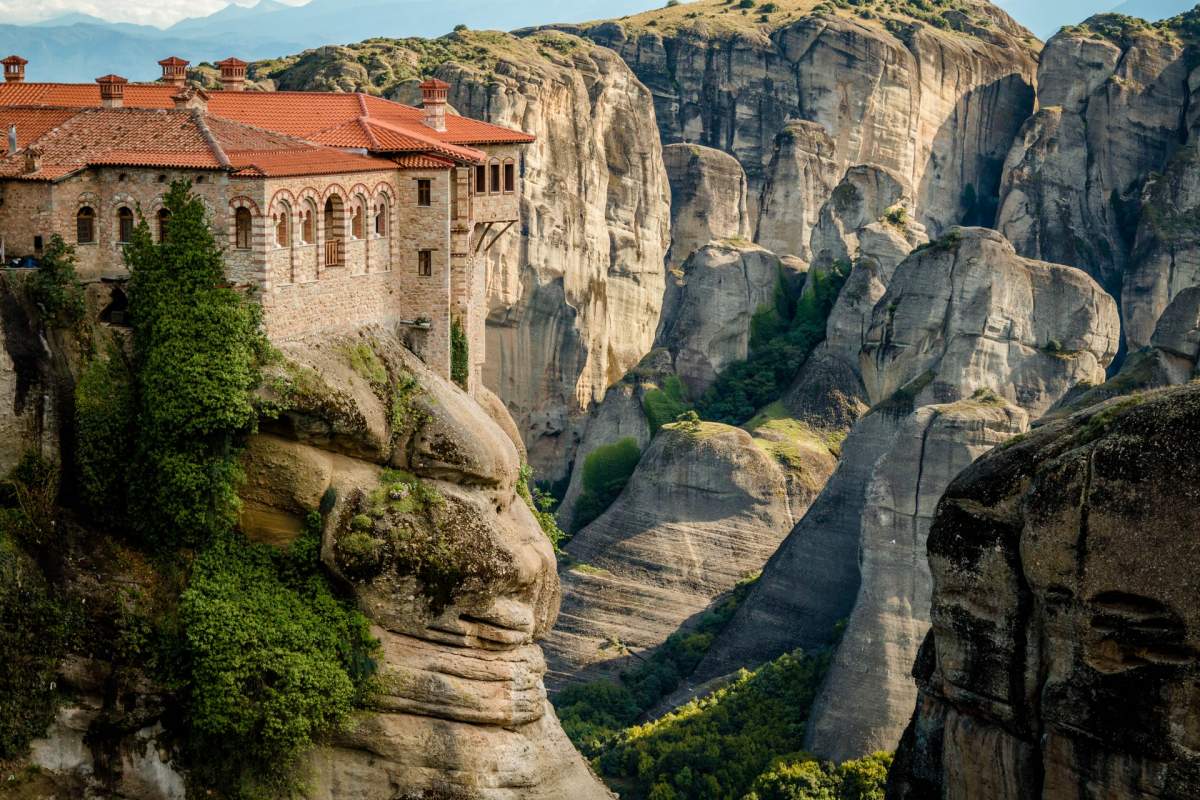
As their names suggest, these cliffs and peaks were seen as meteors sent from the sky. Emerging from the ground as if they had fallen brutally from the sky, they are in fact rocks carved by erosion.
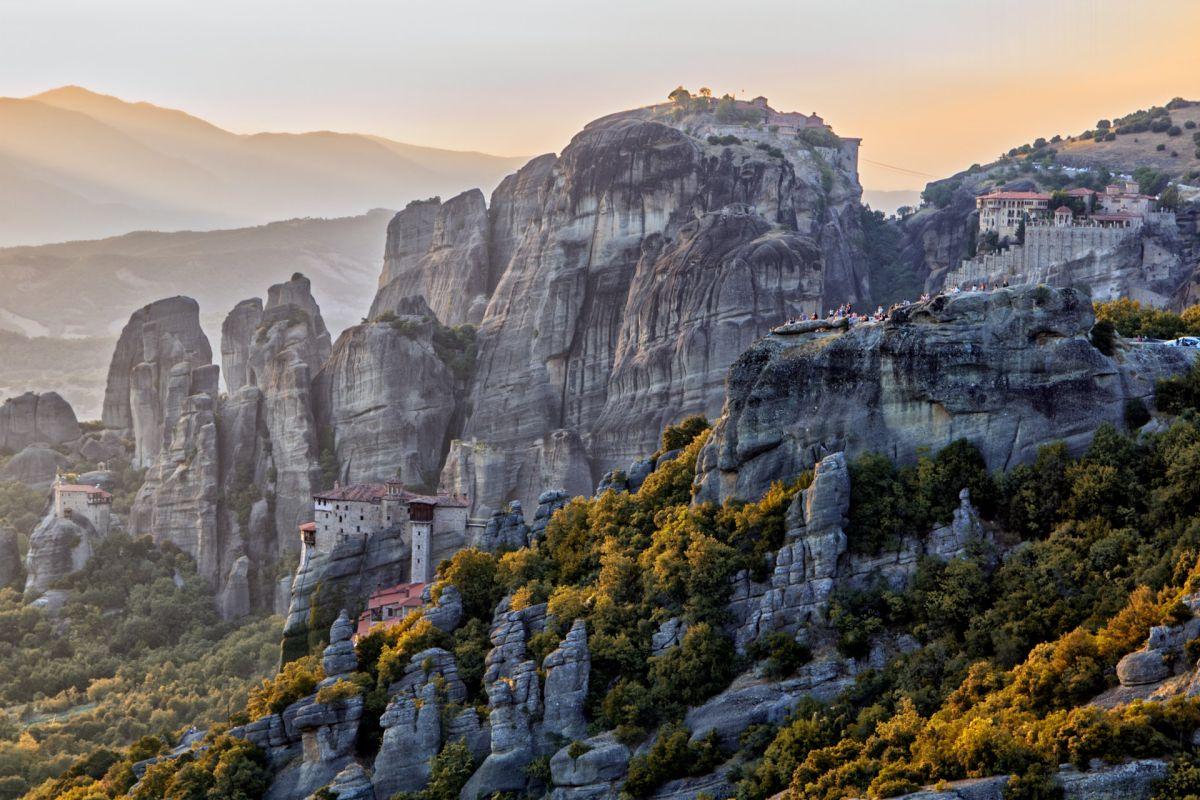
But this aerial place marvels above all due to its Orthodox Christian monasteries perched on the top of these cliffs. The first hermits settled in caves on these rocky peaks from 985. But it wasn’t until the 14th century that the first buildings appeared. The first monastery was founded in 1382 and 22 others were then built between the 14th and 16th centuries. Unfortunately, most of the monasteries fell into ruin in the 17th century. Today, only 7 monasteries remain active.
18. Mystras
Situated on the slopes of a hill west of Sparta in the massif of Mount Taygetus, the Byzantine city of Mystras impresses as much by its location as by its monuments.
For almost 2 centuries, Mystras was a powerful city, marked by a strong political, social and cultural dynamic. Among the monuments showing this glorious past, there is the fortress of Villehardouin, the impressive castle which dominates the city. Built in 1249 by William II of Villehardouin during the occupation of the Franks, it rises to 620 meters above sea level.
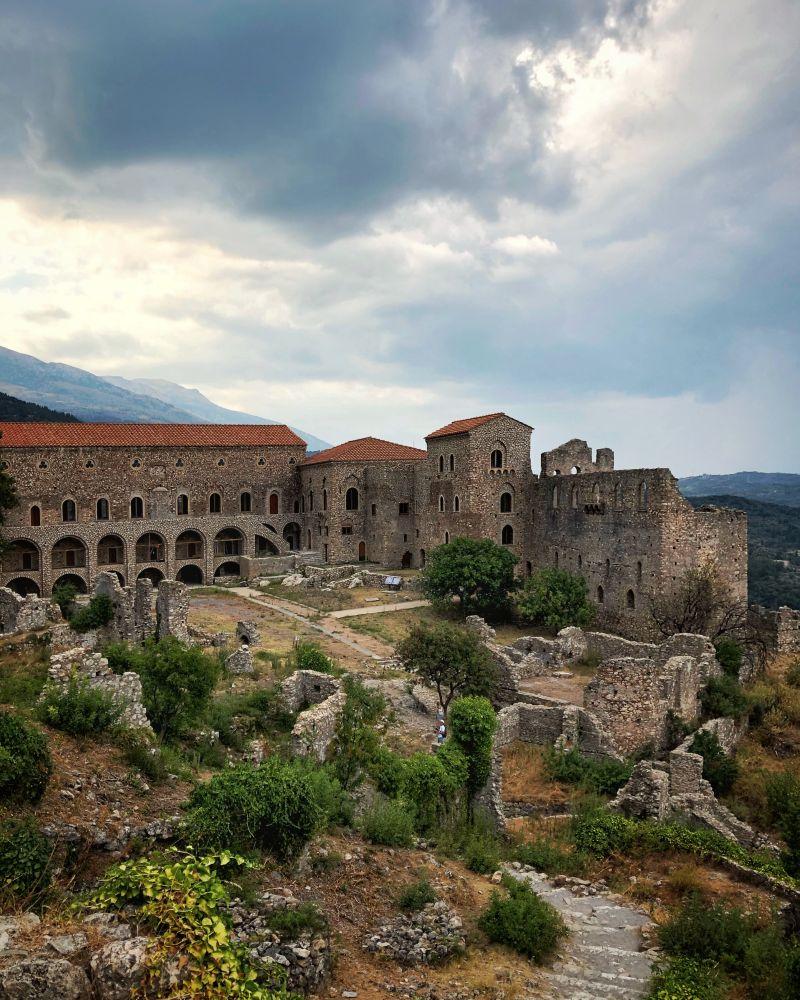
Mystras is also home to the magnificent Despot’s Palace, remarkable for its state of preservation, as well as several churches and monasteries that are just as beautiful.
This wonderful medieval city was definitively abandoned during the Greek war of independence (1821-1829). Nowadays, Mystras is a ghost town in the heart of a breathtaking natural setting.
19. Mykonos Windmills
The windmills of Mykonos are one of the highest points of the island and offer a superb view from the top of the hills.
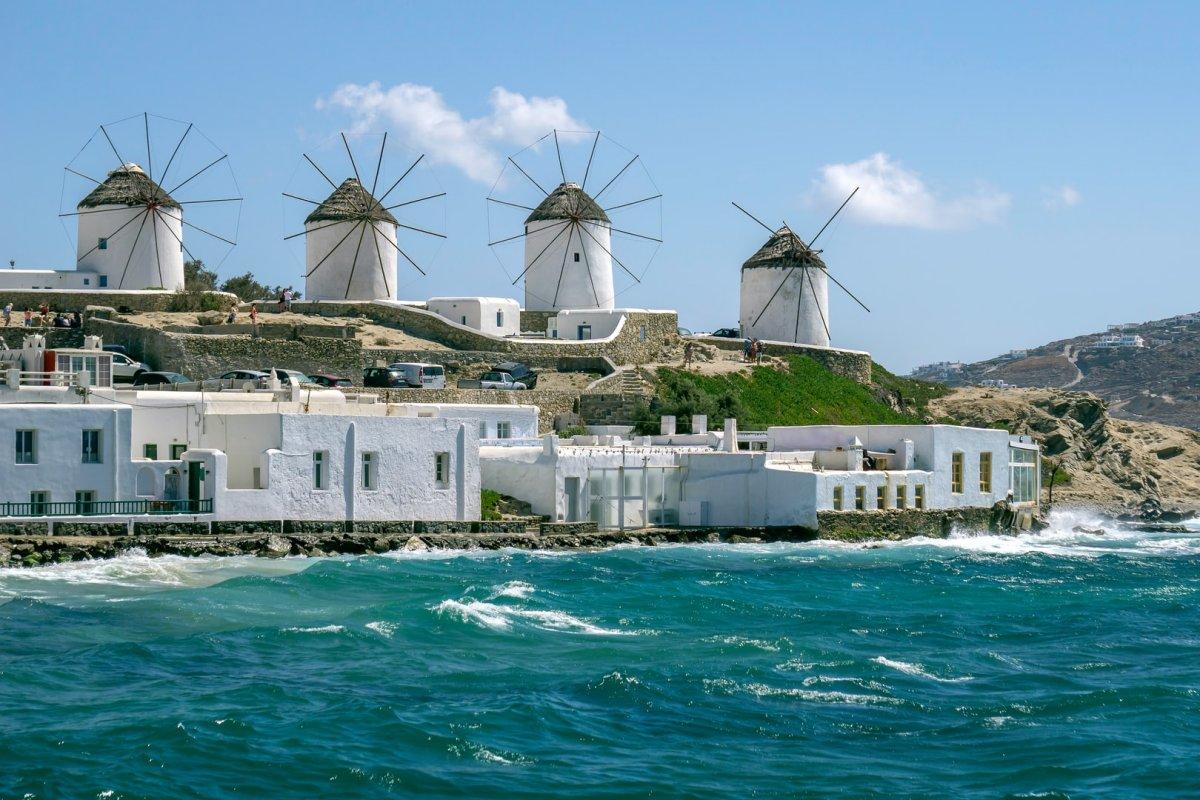
Between the 17th еand 18th centuries, the island had more than 20 windmills that contributed to the production of wheat: it was a fundamental element of the island’s economic development. Today, 7 of them remained and are maintained to preserve this historical heritage.
As a true characteristic of Mykonos, these windmills and their thatched roofs lined up on a hill overlooking the sea constitute one of the most famous Greece attractions you can’t miss when staying in Mykonos.
20. Domes of Santorini
The Domes of Santorini are the most iconic landmark of the Cyclades. You’ve certainly often seen pictures of these domes everywhere on Instagram, in advertisements, and in postcards as they are so famous.

You can admire these blue domes mainly in the villages of Fira and Oia. Fira is the most important town on the island of Santorini located at the foot of the volcano, in a rocky setting between the long red and black sand beaches. Dotted with blue-domed churches, pastel-colored houses, and cobbled streets, it offers breathtaking panoramas, especially on the caldera.
Oia is 25 minutes away from Fira and is located on the side of a cliff perched at the top of the caldera. It’s the best romantic spot to contemplate the magnificent sunsets and the typical picturesque Greek architecture.
21. Palace of the Grand Master of the Knights of Rhodes
The Palace of the Grand Masters is an impressive medieval military fortress located on the island of Rhodes and a famous monument in Greece.
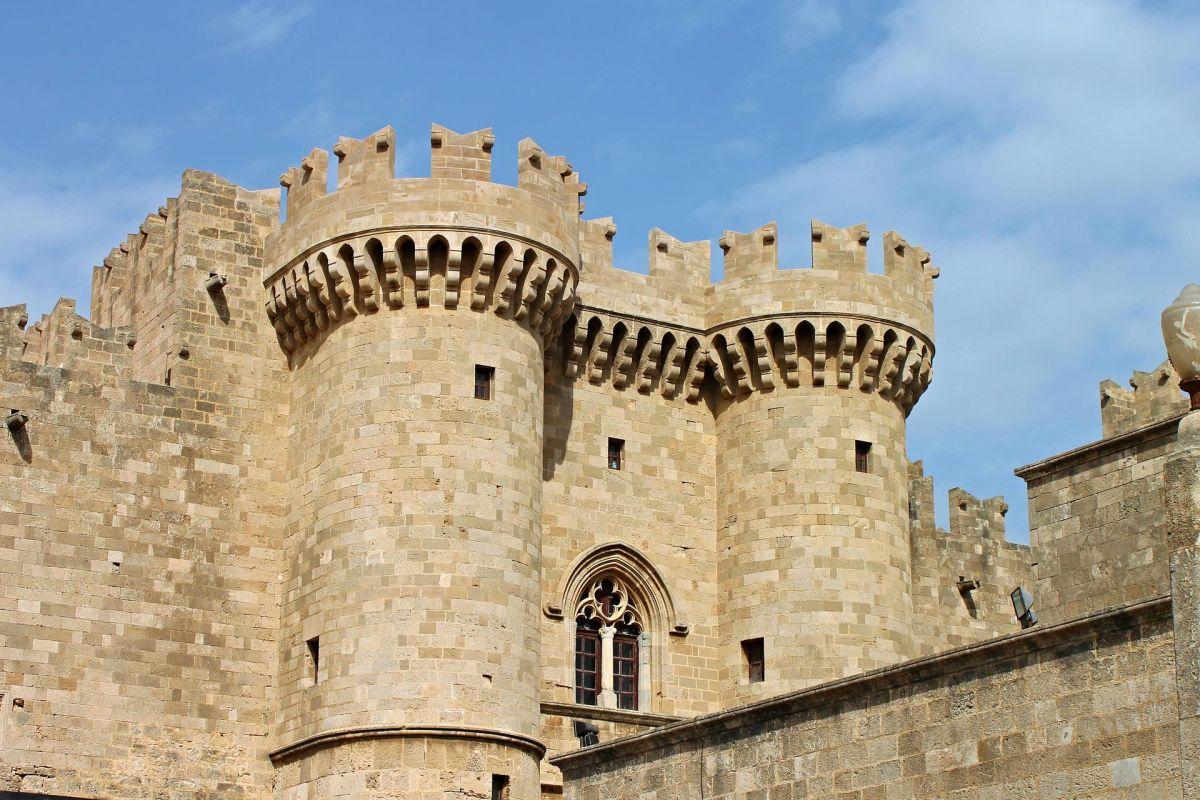
Built in the 14th century on the site of an ancient temple dedicated to the sun god Helios, this fortress was the headquarters of the Order of St. John of Jerusalem, better known as the Hospitallers. Destroyed by an earthquake in 1851 and an explosion in 1856, this fortified palace was rebuilt and now houses the Byzantine Museum of Rhodes and is one of the island’s must-see monuments.
The main gate is framed by 2 massive towers that open onto a large central courtyard decorated with geometric marble slabs and topped by 2 levels of arcades. The palace has more than 150 rooms, 24 of which are open to visitors and display plenty of objects recounting the history of Rhodes and the Dodecanese islands.
22. National Garden
Located in the center of Athens, the National Garden is also called the Amalia garden in honor of Queen Amalia of Oldenburg, wife of Otto I of Greece, who initiated its creation in 1836.
The queen commissioned Frederick Schmidt, a German botanist, who installed more than 15,000 varieties of plants and animals. But the months of drought that followed were harmful to many of the plantings. In 1840, a French landscaper, Louis Bernard, was called in to save the garden. He replanted 15,000 species, shaped the paths and lawns, and created an English-style garden. His work was so appreciated that a path in the park was named after him and he was awarded the Order of the Redeemer of Greece!
The park is open to the public every day from sunrise to sunset and is very popular with Athenians and visitors alike. It also has a small zoo, a children’s library, a duck pond, a small café, and a botanical museum. This oasis of freshness and greenery allows everyone to take a well-deserved break while exploring Athens.
23. Fortress of Palamidi
The fortress of Palamidi, located in the Peloponnese region about 2 hours from Athens, is an iconic attraction of the beautiful city of Nafplio and one of the most impressive buildings in Greece.
This fortress settled on the top of the Palamidi rock dominates the whole city of Nafplio, the plain of Argolida and Lerna with its 286 meters of altitude. Built around the 17th century by 2 French architects during the Venetian occupation, the fortress is composed of a massive wall, connecting 8 bastions and several watchtowers.
If you want to visit, you should know that getting to the fortress is not an easy task. Indeed, from the Arvanitia square in Nafplio old town, you’ll have to climb almost 1,000 steps to get there! But don’t worry, the fort is also accessible by car.
24. Mount Athos Monasteries
In the northeast of Greece, Mount Athos is a sacred mountain culminating at 2,030 meters on the Aegean Sea and where live about 2,000 monks dispatched in no less than 20 orthodox monasteries. They live and pray in community, isolated from society and cut off from the rest of the world.
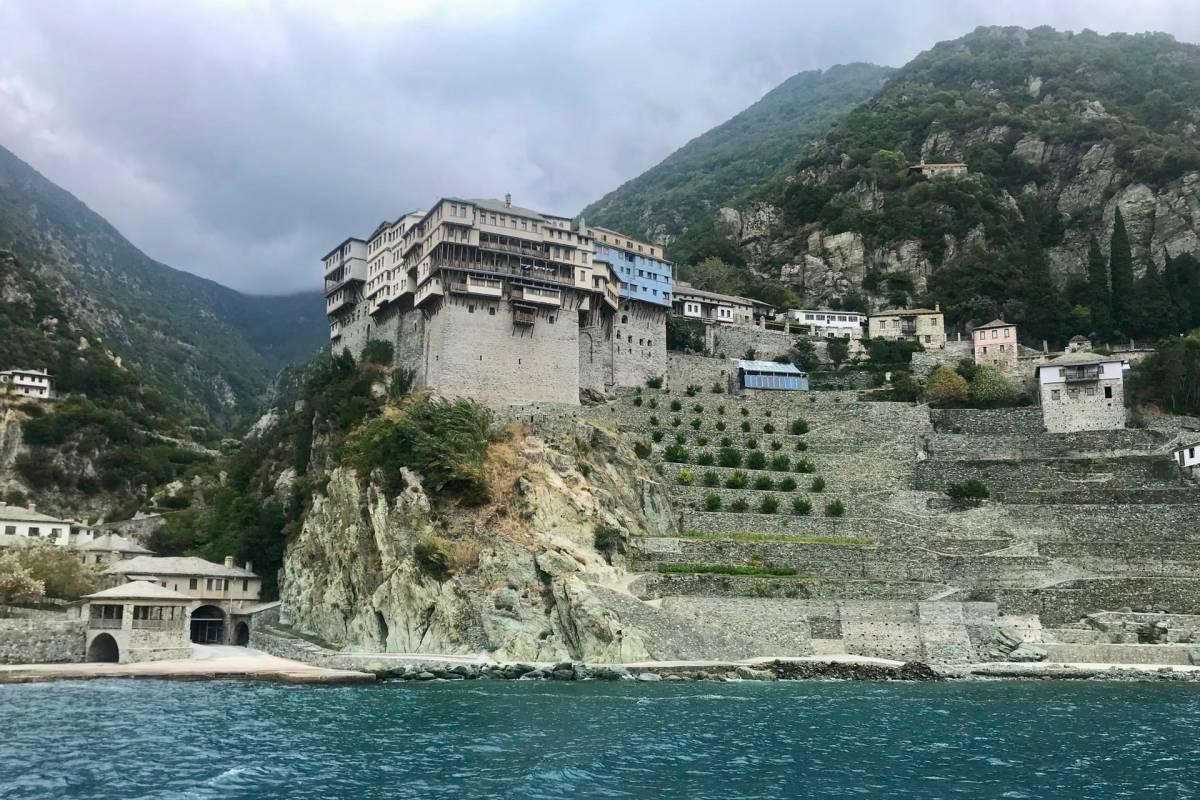
Legend says that the Virgin Mary fell in bliss in front of the beauty of the place. So much so that she asked Jesus to give it to her as a gift. It’s thus not to corrupt the devotion of the Virgin to the crowned mountain that the monks decided to banish the women of this place since the year 1060.
These 20 monasteries are managed by the monastic republic of Mount Athos. In other words, they are semi-autonomous from the Greek government, which has no power over the rules and laws that govern the life of the monks. This partly explains why the rule forbidding women and any female animal to set foot on Mount Athos is still in force on the sacred mountain.
25. Chania Old Town
Visiting Chania is discovering a city with multiple influences. Located in the west of Crete, it’s one of the most touristic cities on the island. It was the capital of Crete until 1971 since being replaced by Heraklion.
Inhabited since the Neolithic period, the city was built on the ancient city of Kydonla. The Byzantines, Venetians, and Ottomans who successively occupied the city have left visible marks in the old town, making it a very unique place.
The old town is organized into 5 quarters, a labyrinth of pedestrian, cobbled and colorful streets full of small artisanal stores, cafes, and restaurants to discover. You’ll find alleys dedicated to leather and another to knives.
26. Spinalonga
Spinalonga is a tiny island on the north coast of Crete, opposite the town of Elounda and not far from Agios Nikolaos. It’s one of the most visited archaeological sites in Crete.
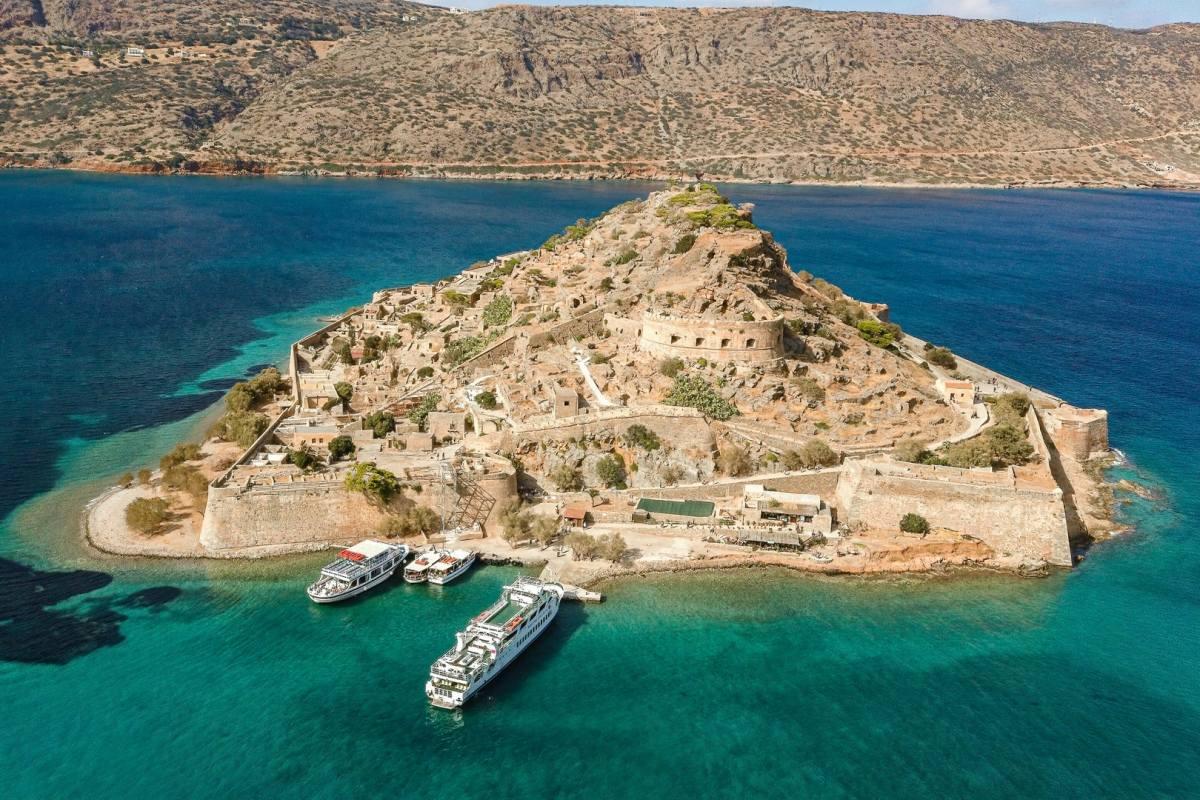
The island of Spinalonga is rich in history whose remains can still be seen today. In ancient times, a fortress was erected to protect the city of Elounda. During the period of Venetian rule, a new fortress was built on the ruins of the ancient fortress, again with the aim of protecting the port of Elounda. The fortress finally surrendered to the Ottoman invasion in 1715, and then became a leper colony at the beginning of the 20th century, from 1904 to 1957. Since then, the island is uninhabited.
Located near the Cretan coast, it’s very easy to visit Spinalonga. Shuttles run continuously throughout the day from the towns of Agios Nikolaos, Elounda, and Plaka.
27. Monemvasia
Located in the southeast of the Peloponnese, the city of Monemvassia is nestled on a fortified rock accessible only by a bridge.
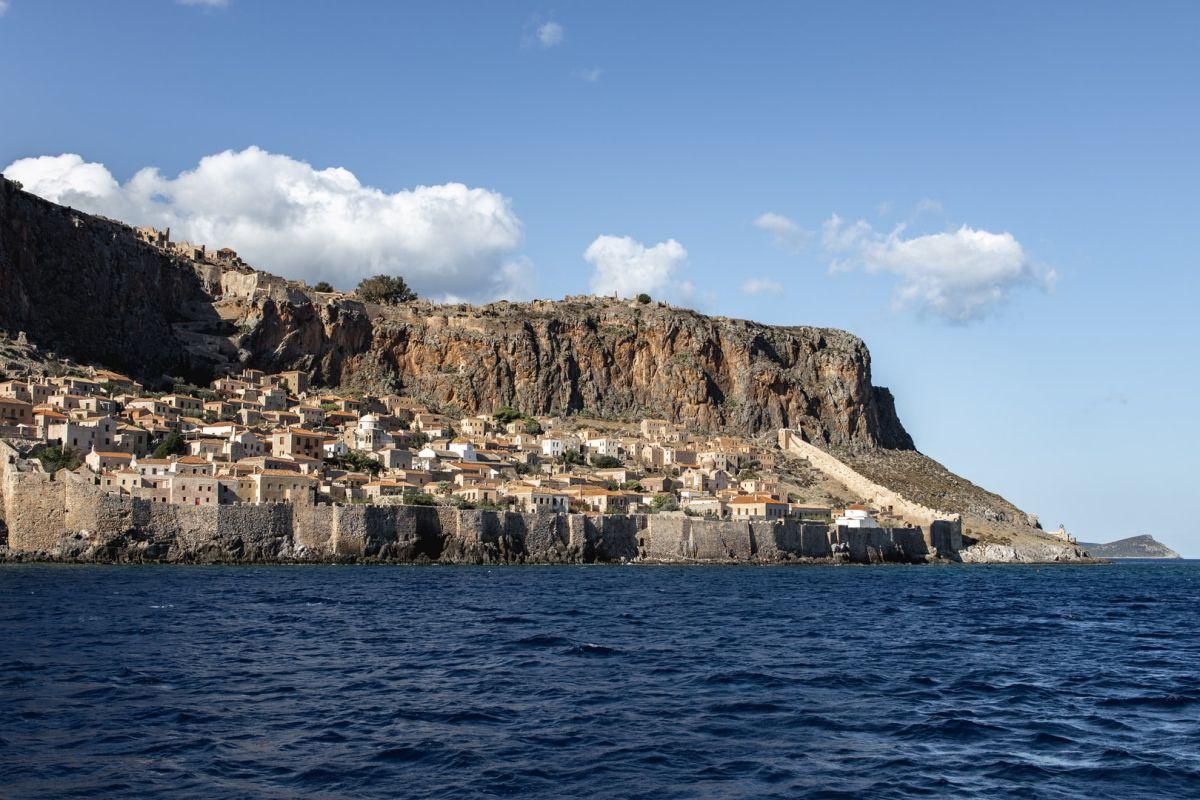
The first traces of settlement go back to more than 8,000 years! Coveted for its strategic position between Europe and the East, the city has seen the ages and the invaders succeed one another, appropriating over the centuries the architecture, the customs, and the religions. Definitely turned towards the sea, Monemvassia was a hub of Mediterranean trade. At its peak in the 13th and 14th centuries, the city had more than 8000 inhabitants!
The must-do when visiting Monemvassia is the climb from the Kastro to the church of Saint Sophia, a short walk of about 30 minutes. From the top, you can enjoy a breathtaking view of the whole site.
28. White Tower of Thessaloniki
The White Tower is the symbol of the 2nd largest city in Greece, Thessaloniki, a port city located in the north of the country.
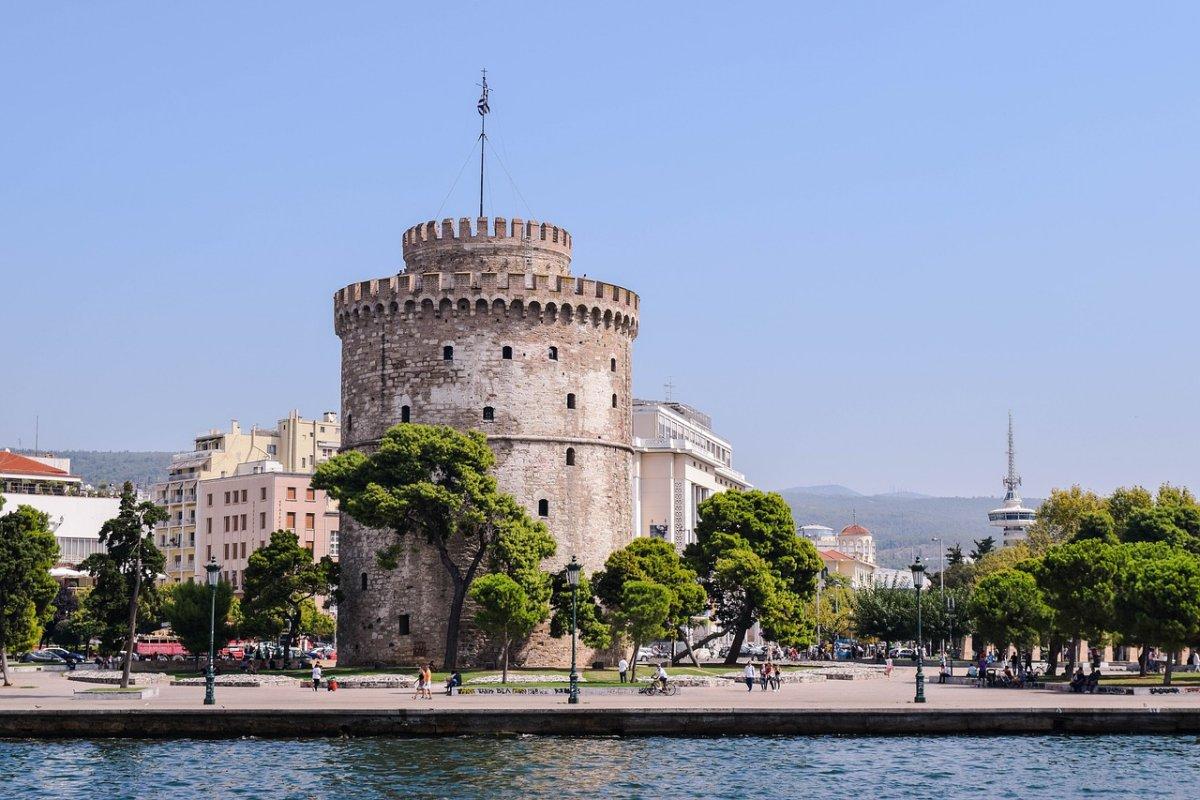
Completed in 1535 under the Ottoman reign of Suleiman the Magnificent, the walled tower served as a barrack and prison. Also known as the Bloody Tower, it was a place of execution and torture. It was only at the end of the 19th century that the tower became the White Tower after it was repainted white by a prisoner.
Standing on the waterfront, this 34-meter tower now houses a museum that traces the history of the city. With a turret of 12 meters high, make sure to climb to the top to enjoy a 360 panoramic view of Thessaloniki, the sea, and Mount Olympus.
Natural Landmarks in Greece
Greece isn’t only known for its man made landmarks and its history. The Greek lands are also known for their diverse and idyllic landscapes as if they were straight out of paradise. From sandy beaches and turquoise waters to mountains, Greece offers a plethora of unique places to discover.
Let’s discover 11 of the most famous places in Greece that are natural features! 🌴
29. Mount Olympus
Located in the north of Greece, Mount Olympus is the highest mountain range in the country. It’s located near Thessaloniki and is famous for its rich Byzantine heritage and for its Orthodox chapel, the highest in the world at 2,803 meters.
The summit of Mount Olympus, the Mytikas peak, reaches 2,917 meters above sea level. Considered the residence of the 12 Olympian deities of Greek mythology (Zeus, Hera, Aphrodite …), the mountain is one of the most famous landmarks in ancient Greece and enjoys great importance in the eyes of the Greeks until today. The history of the mount is also marked by the Macedonian Greece of Alexander the Great since it hosts the ancient city of Dion, the religious center of Macedonia.
Visiting Mount Olympus is also discovering a unique national park classified by UNESCO since 1981. It’s a dive into a Greece that we don’t always see in the tourist guides, a Greece that is the paradise of hikers and climbers!
30. Caldera of Santorini
The Caldera of Santorini is a huge volcanic crater submerged by water and surrounded by cliffs that bound the bay of the archipelago of Santorini, in the middle of the Aegean Sea of Cyclades.
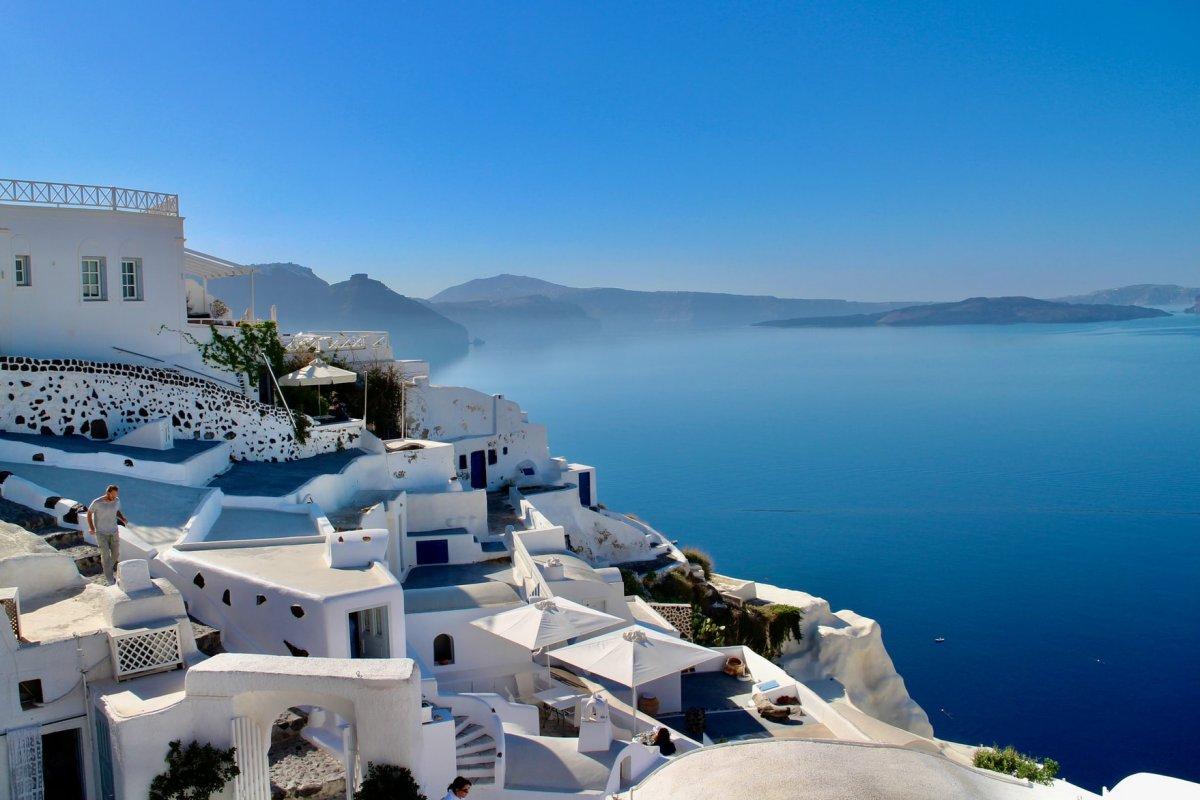
In the heart of the caldera is the island of Nea Kameni, the bubbling point of Santorini. Formed following the eruption of the Santorini volcano, the crater of Nea Kameni is the place where the volcano is most active, at 150 meters above sea level. The atmosphere is hot, the rocks are black or red, plants barely present… In short, a chaotic landscape at its finest!
Visiting the Caldera and the crater of Nea Kameni will give you plenty of beautiful views and a great hike in the middle of an arid, lunar landscape, composed of volcanic rock contrasting with the white and blue landscape of Santorini.
31. Canal d’Amour
Located in the village of Sidari on the island of Corfu, the Canal d’Amour is one of the most unique places in the Ionian Islands.
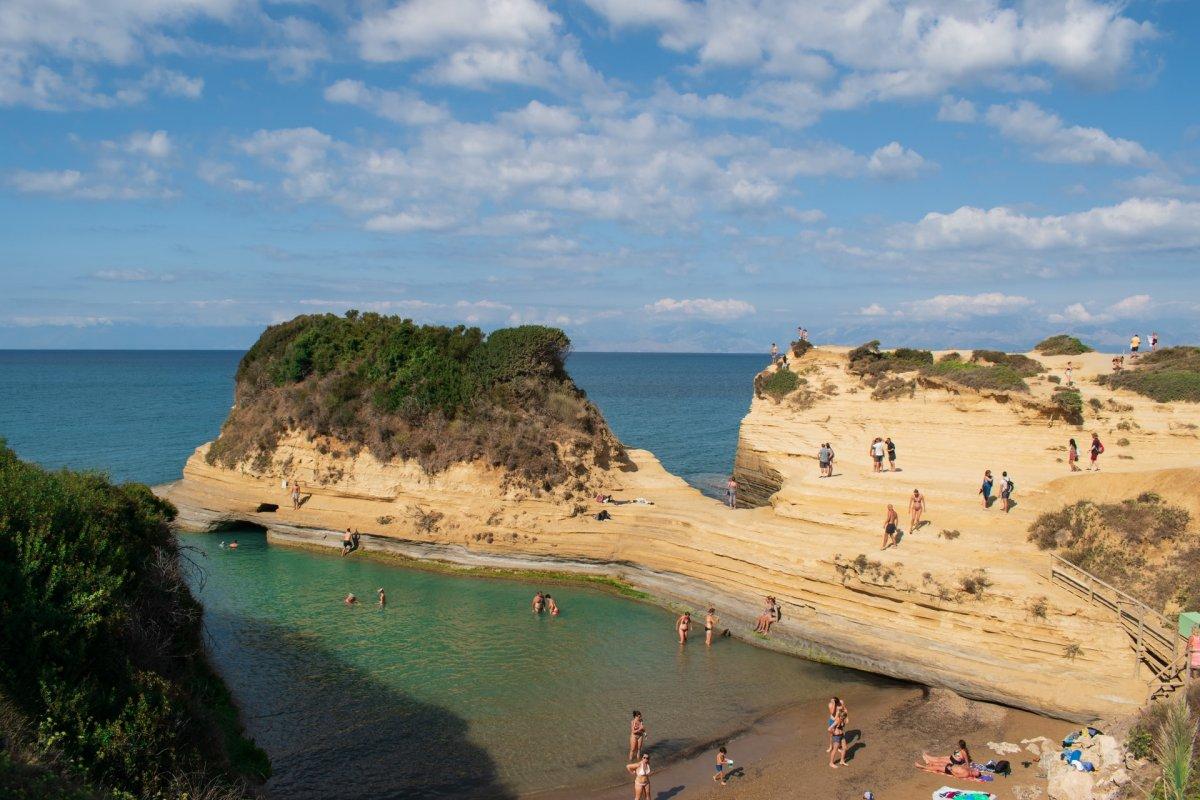
The Canal d’Amour is a small idyllic beach with unique rock formations shaping a series of beautiful coves and a larger channel with a passage to the clear blue water of the Ionian Sea. According to legend, if you swim in the bay, you’ll meet the love of your life or marry your current love, and this is where the beach gets its name from.
The rocks have different shades of yellow and lots of greenery on top, creating a breathtaking view. Climb these rocks for an exceptional view of Corfu and the bay!
32. Shipwreck Beach of Zakynthos
It sounds like the title of a movie but in reality, it’s a beach. Shipwreck Beach in Navagio is undeniably the most famous image of Zakynthos and one of the most beautiful places in Greece.
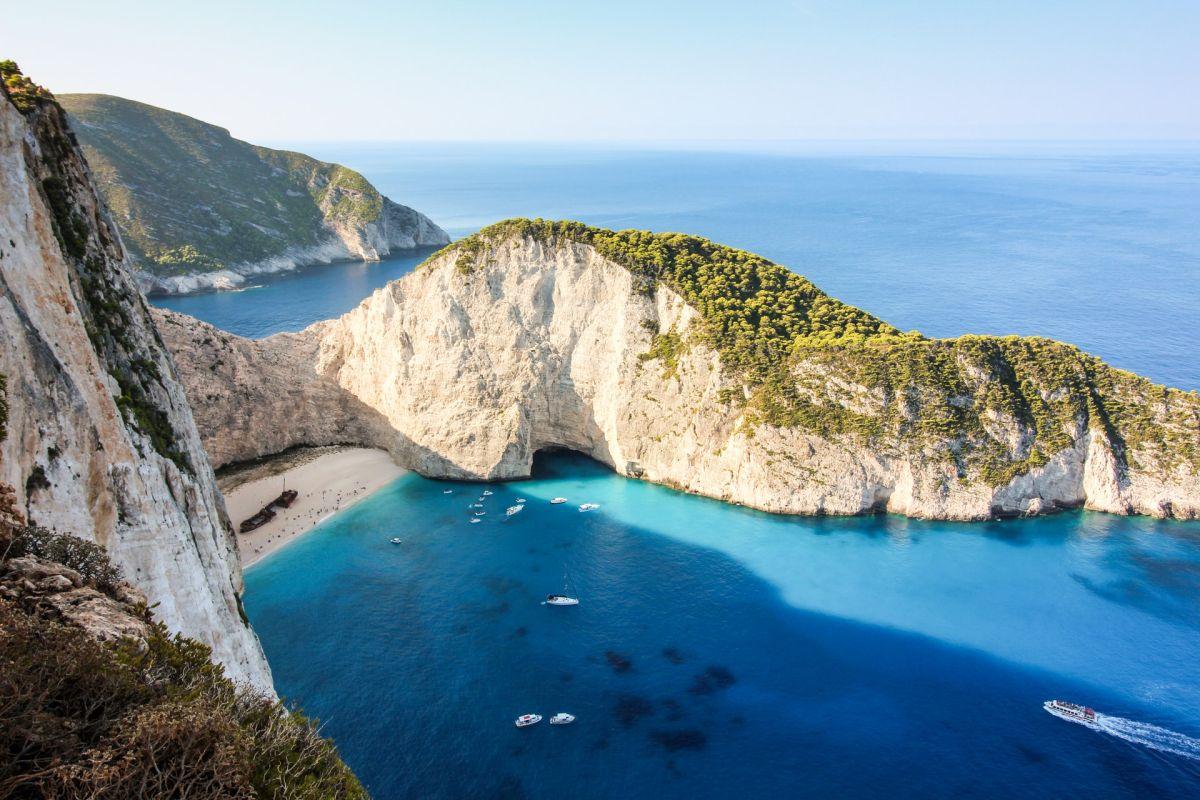
Accessible by sea only, this beach is located in the northwestern part of the island where you’ll be amazed by a crystal clear sea and soft sand. Its name refers to the sinking of the ship Panagiotis, which occurred in 1983. The ship was carrying cigarettes to be sold on the black market. Over the years, the wreck was covered with sand and took the appearance of a strange creature.
From the cliffs, you’ll have a unique view at more than 200 meters high on the beach. You’ll enjoy the shades of colors, thanks to the thermal springs that surround the area. You can get to Navagio beach through organized tours or by using a local boat.
33. Blue Caves
The Blue Caves are another natural wonder of the island of Zakynthos, on the northwest coast between the port of Agios Nikolaos and Cape Skinari. This landscape of white cliffs pierced by caves with azure waters is a must-see on the Ionian island.
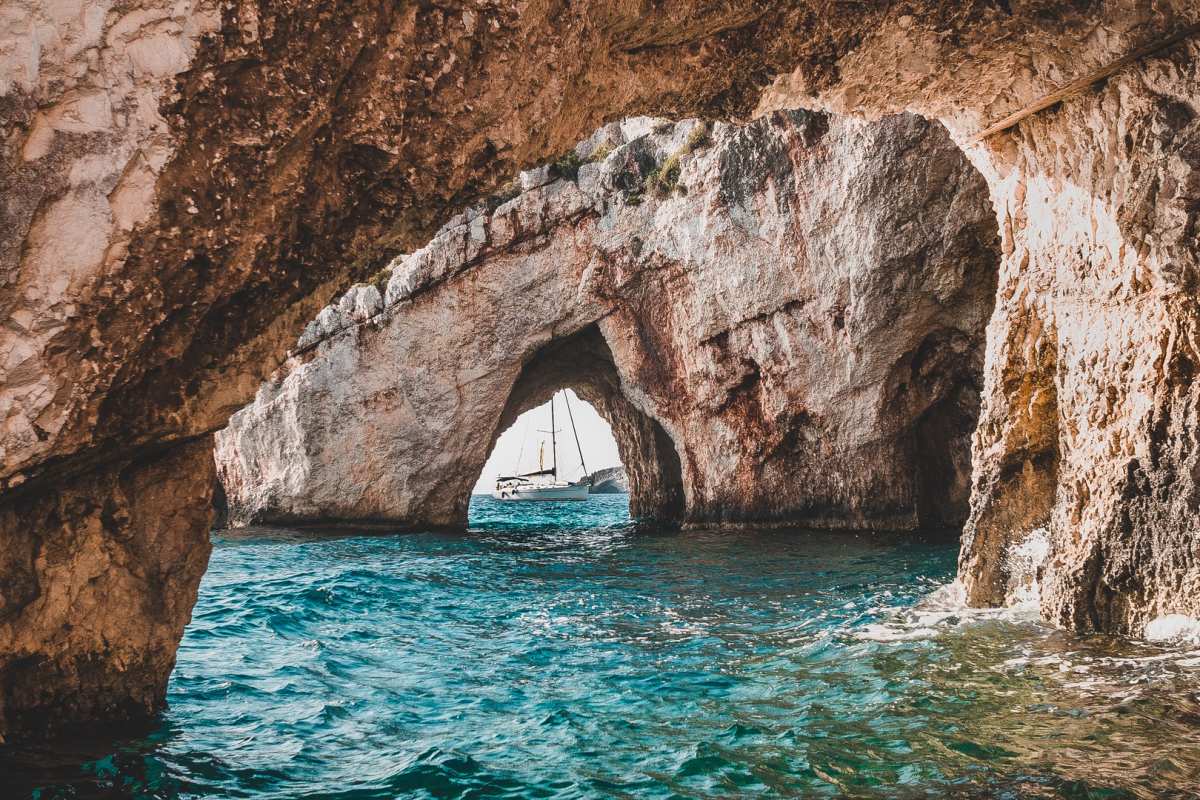
In fact, they aren’t caves as such but rather arches dug by the sea in the cliffs. The sea is turquoise and you can’t get enough of the underwater light effects caused by the reflection of the sun on the walls of the cave and on the water below.
The blue caves can be visited by caique boat, the traditional fishing boat used there, from the ports of Agios Nikolaos or Porto Vromi. Most tours include swimming stops, so bring your bathing suit and a mask to enjoy one of the most beautiful swims of your life.
34. Drogarati Cave
Drogarati Cave is located in Kefalonia, an island in the Ionian Sea known for its unique beaches and geological formations. With remarkable formations of stalactites and stalagmites, the Drogarati cave is one of the most impressive of them.
This cave was discovered 300 years ago, but it was opened to the public only in 1963. It was discovered when a strong earthquake caused a collapse that exposed the cave entrance. Spelunkers say that this cave is about 150 million years old and is a rare geological phenomenon. The cave is about 60 meters deep and has a constant temperature of 18°.
One of the things you should know about visiting Drogarati cave is that there is no easy access: it’s reached by steps and therefore, you can’t visit with a stroller or a wheelchair. Wear good shoes because the access is steep and the steps slippery because of the air humidity.
35. Mount Lycabettus
Mount Lycabettus is the highest point in the center of Athens. Known in Greek as Lykavitos Hill, it stands 277 meters above sea level, offering wonderful views of the Greek capital, the Acropolis, and the coastline.

According to Greek mythology, the goddess Athena, protector of the city of Athens, flew over the city to find a huge rock to place in front of the hill of the Acropolis and thus protect it from invaders. As she was carrying the stone on her way back, a crow came to her, bringing bad news. Athena was surprised and the big rock fell from her hands to the ground. This is how Mount Lycabetta is said to be created.
The hill is one of the largest green spaces in the center of the capital city and many Athenians come here to stroll, walk their dogs or climb to the top to enjoy the view from above. Accessible by foot, funicular, and car, thousands of tourists climb to the top to see the small whitewashed Byzantine chapel of Saint George.
36. Vikos Gorge
Located in Epirus in the Pindos National Park in the north of the country, the Vikos Gorge is one of the most spectacular sites on the planet and an unexpected discovery in Greece.
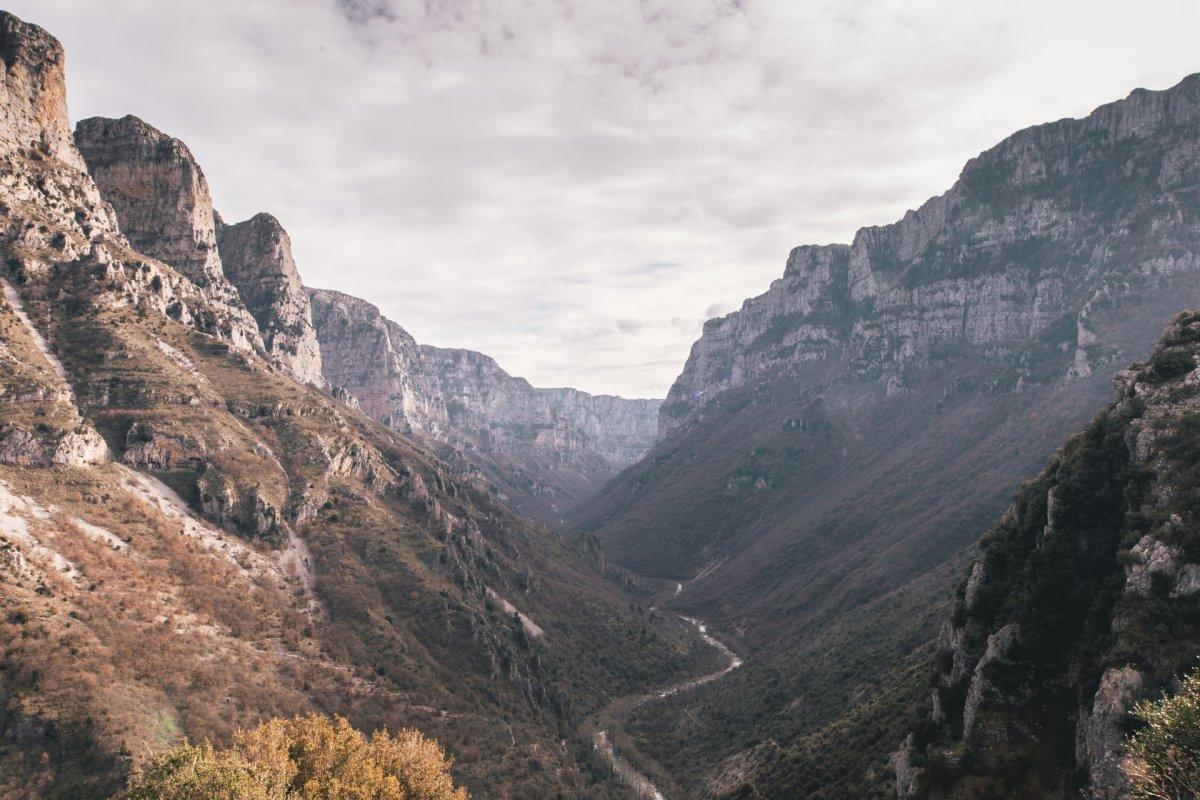
Indeed, the Vikos Gorge is the largest canyon in Europe! Measuring more than 1,000 meters deep, the gorge is ranked 2nd on the list of the deepest canyons in the world, after the one in the United States.
The Vikos Gorge offers some of the best hiking in Greece. There are hikes for all fitness levels, from vigorous 5-hour hikes to one-hour treks. For non-hikers, there are several viewpoints, all easily accessible by foot and offering the most dazzling sights, as well as fun water activities (rafting, canoeing…). No need to tell you it’s a must-do if you’re traveling Greece!
37. Corinth Canal
Located only 1 hour from Athens, the Corinth Canal is an artificial waterway dug through the Isthmus of Corinth to connect the Gulf of Corinth to the west and the Saronic Gulf to the east.
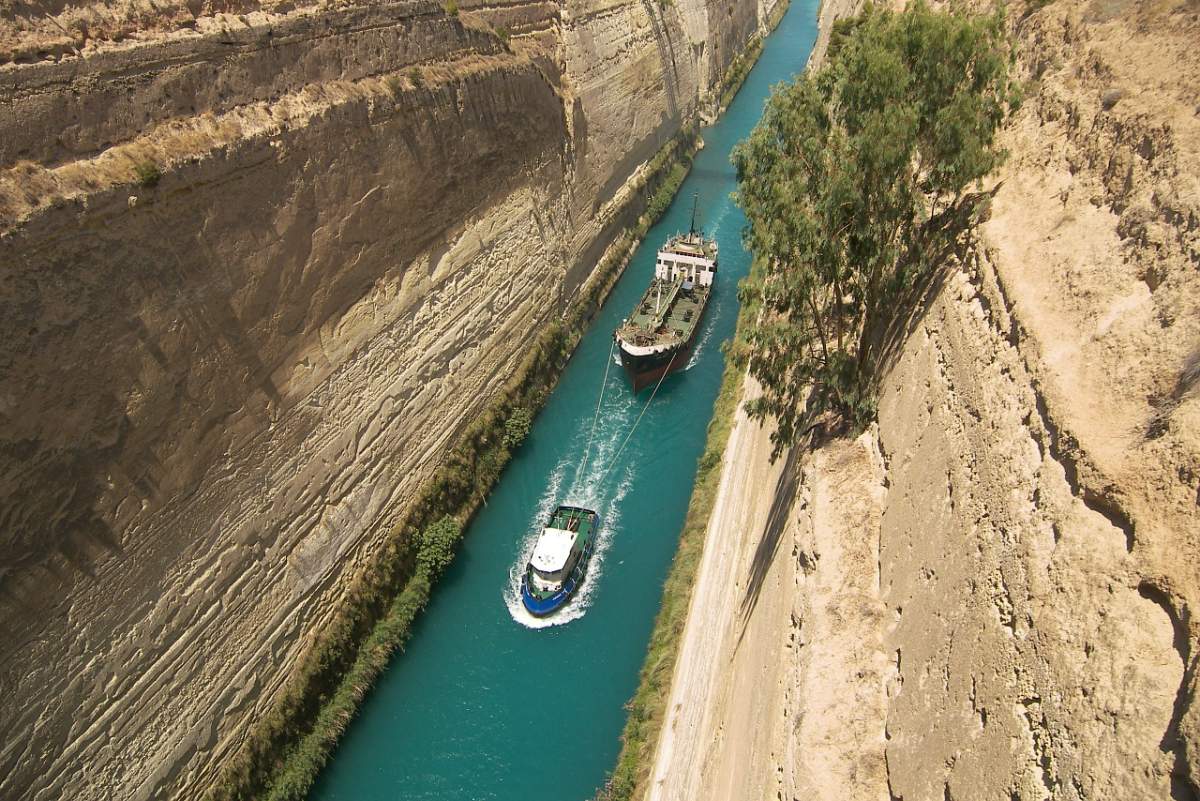
Dug between 1882 and 1893, the canal turned the Peloponnese into an island at the end of the 19th century, but the project already existed under Emperor Nero in the 1st century AD. Today, the canal cuts through 2 steep cliffs 52 meters high, with a water depth of only 8 meters, for 6,343 kilometers and 24.6 meters wide. About 11,000 tourist vessels pass through it every year!
One of the best ways to discover the Corinth Canal is to take a cruise! They run from early April to late October and consist of a round trip between the 2 mouths of the canal and usually lasts 1 hour and 15 minutes. The trip to the bottom of the cliffs is thrilling and makes you aware of the scale of this huge project.
38. Balos Beach
Crete is famous for its gorgeous beaches with turquoise waters. For those who like to relax, enjoy postcard-like landscapes and swim, the Balos lagoon with the islands of Tigani and Gramvousa in the background is an absolute must-see in Crete.
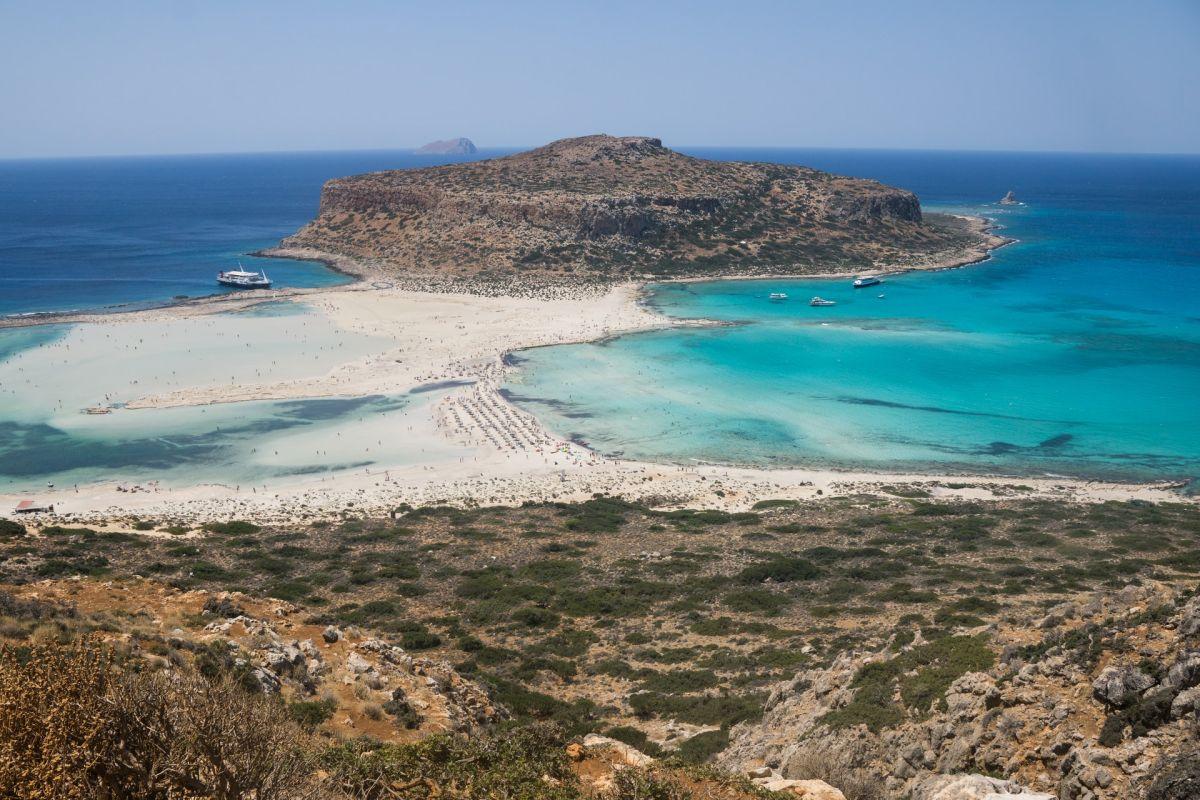
Located about 1h20 from Chania, Balos is a site famous for its water, between turquoise and emerald, warm and shallow, and for its incredible landscape. No construction comes to alter its environment, you’ll feel like being lost in full nature!
When visiting, don’t forget to bring along swimming goggles or a diving mask to observe the small local fish and the exceptional colors of the lagoon sand.
39. Samaria Gorge
The Samaria Gorge is located in the Samaria National Park, in the White Mountains of western Crete. It’s the most famous hike in Crete and undoubtedly one of the most beautiful on the island.
With a length of 16 kilometers, the Samaria Gorge is one of the longest gorges in Europe. This park, which extends over 5,100 hectares at an altitude of more than 2,100 meters, is home to some of Greece’s endemic animals and plants.
The adventure in the gorges will first take you down the mountain to the heart of the gorges, where you will follow the river bed. Little by little, the rocky walls grow and get closer to form, at their end, a small door of 3 meters wide and more than 300 meters high. The gorge is generally open every year from May 1st to October 31st depending on the weather. Expect 5 to 6 hours for this long walk and bring good shoes because the path is difficult and rocky. The walk ends at the edge of the Libyan Sea in the small coastal village of Agia Roumeli.
40. Sarakiniko Beach
Sarakiniko is the most popular beach on the island of Milo in the Cyclades. As soon as you arrive, it’s easy to understand why: with its white rock formations and azure blue waters, Sarakiniko beach is the ideal place to relax, but also to go on an adventure.
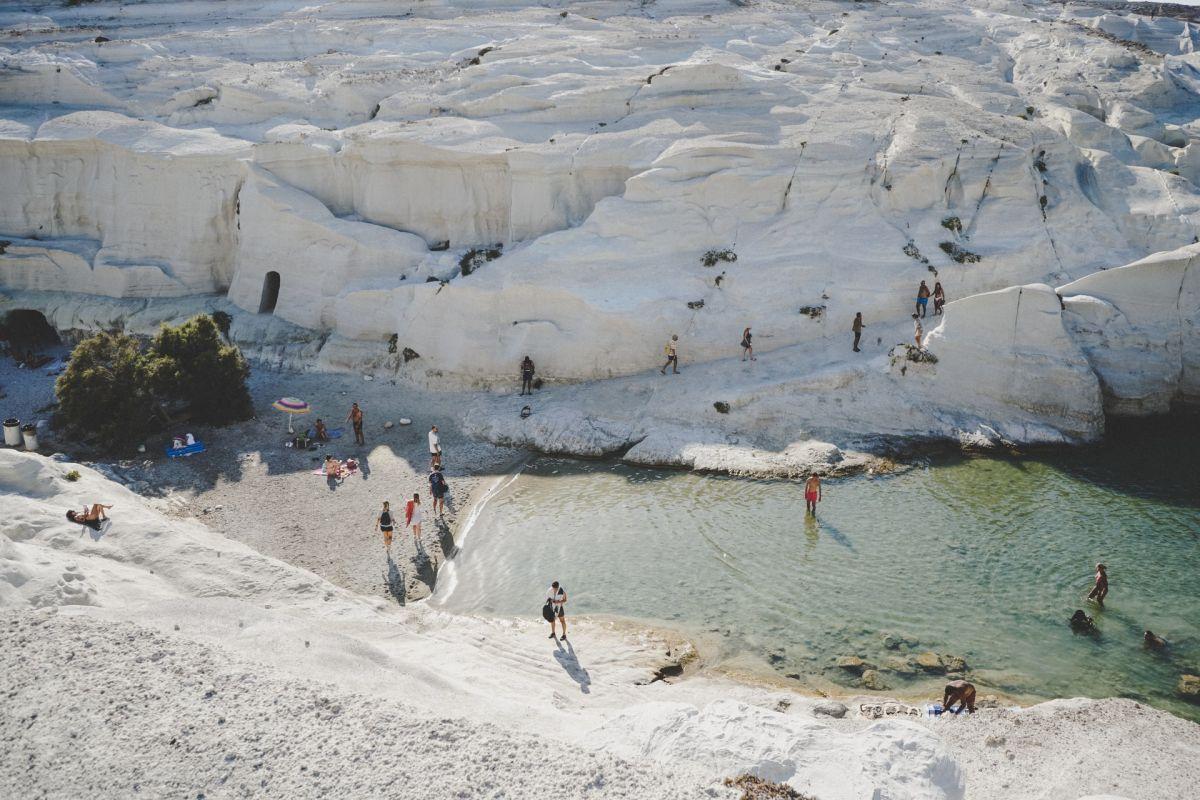
Sarakiniko is an absolutely unique wilderness site where the deep blue sea carves out sparkling white volcanic rocks. This moon-white beach has made Milo Island famous, although it has more than 80 beaches. Incredibly photogenic, this beach hosts fashion photo shoots as well as influencers from around the world.
Swimming is possible on the very small beach or diving from the rocks for the most adventurous of you. Take a mask and go discover the galleries dug under the rocks, it’s definitely worth a look!
—
Hooray! You’ve made it to the end of this list of the most famous Greek places! Before you leave, here’s one last bonus for you, right below.👇
Map of the Famous Landmarks of Greece
Here is our map of the 40 Greece famous landmarks listed on this post. To get it, simply click on the image below to open it in Google Maps. Then click on the “star” icon to save it to your own maps.
I hope you could’ve made your list of the must-see attractions in Greece thanks to this guide. Don’t hesitate to comment below if this is the case, I would be very pleased to read your feedback!
Loved this post? Share it with your friends by using the buttons below, I’m sure they’ll love it 🙂
Pin this to Pinterest!
Enjoyed this guide? Then help a fellow traveler and pin it! They'll most definitely love you for it, 100% guarantee.
